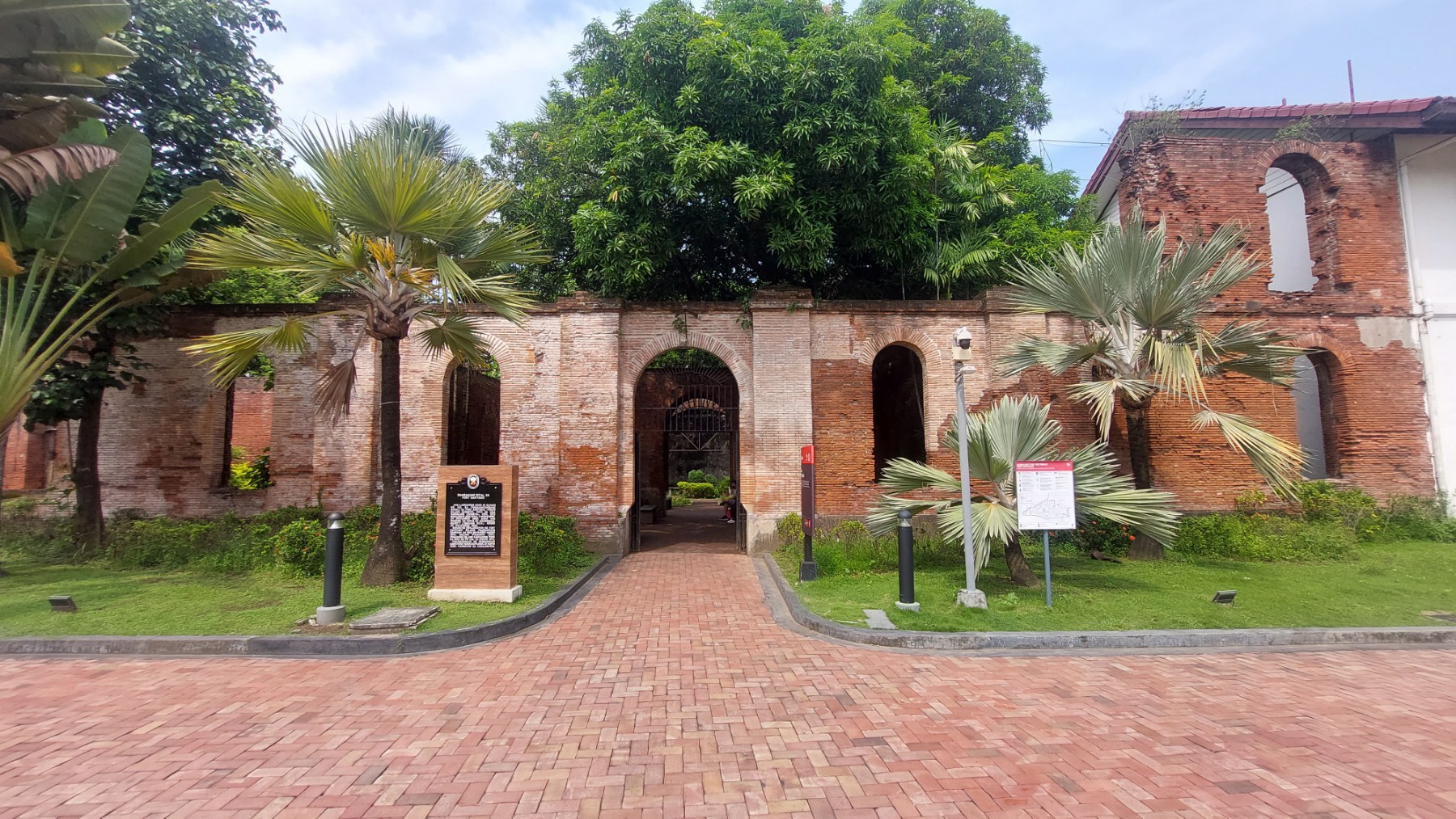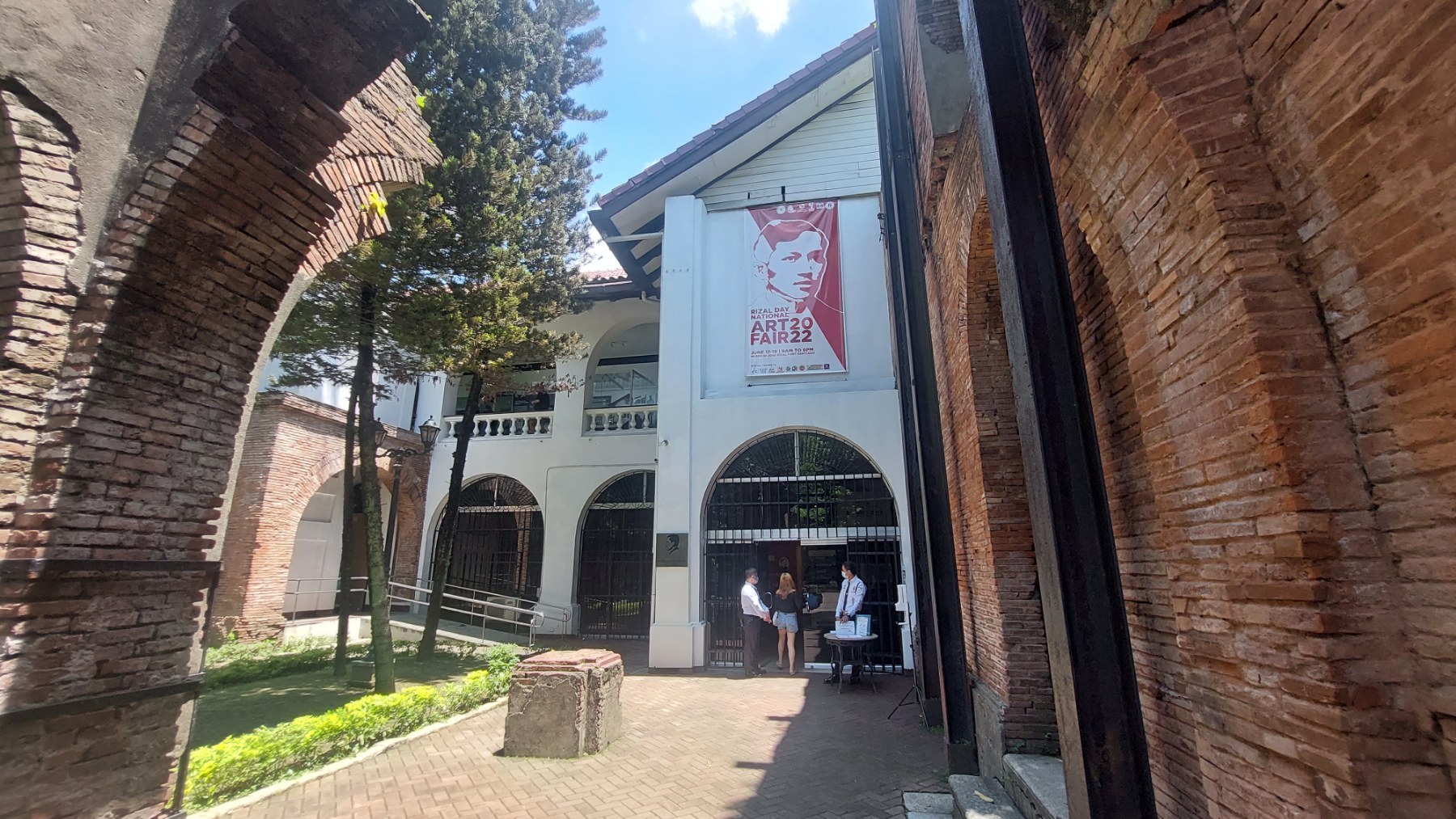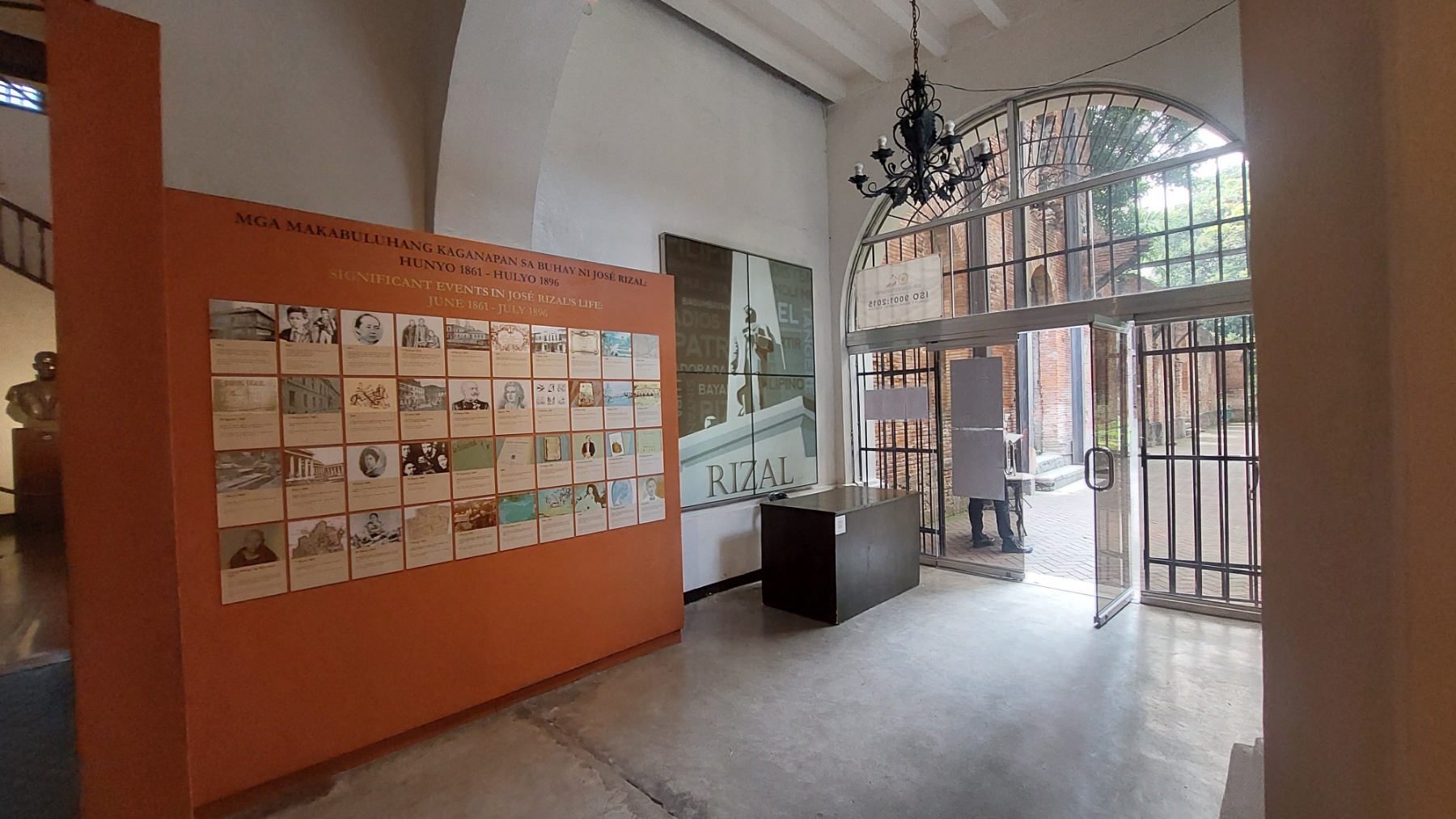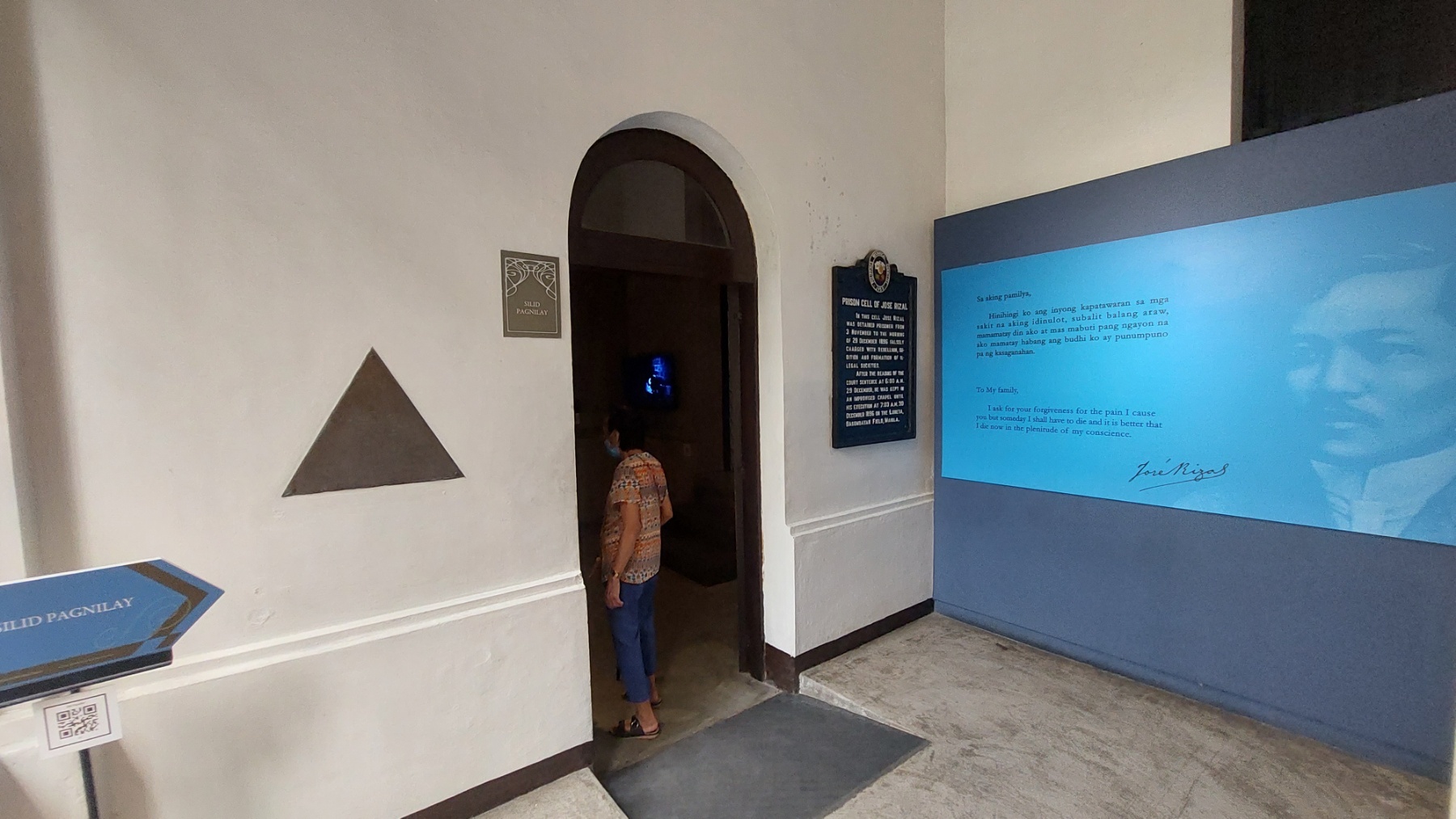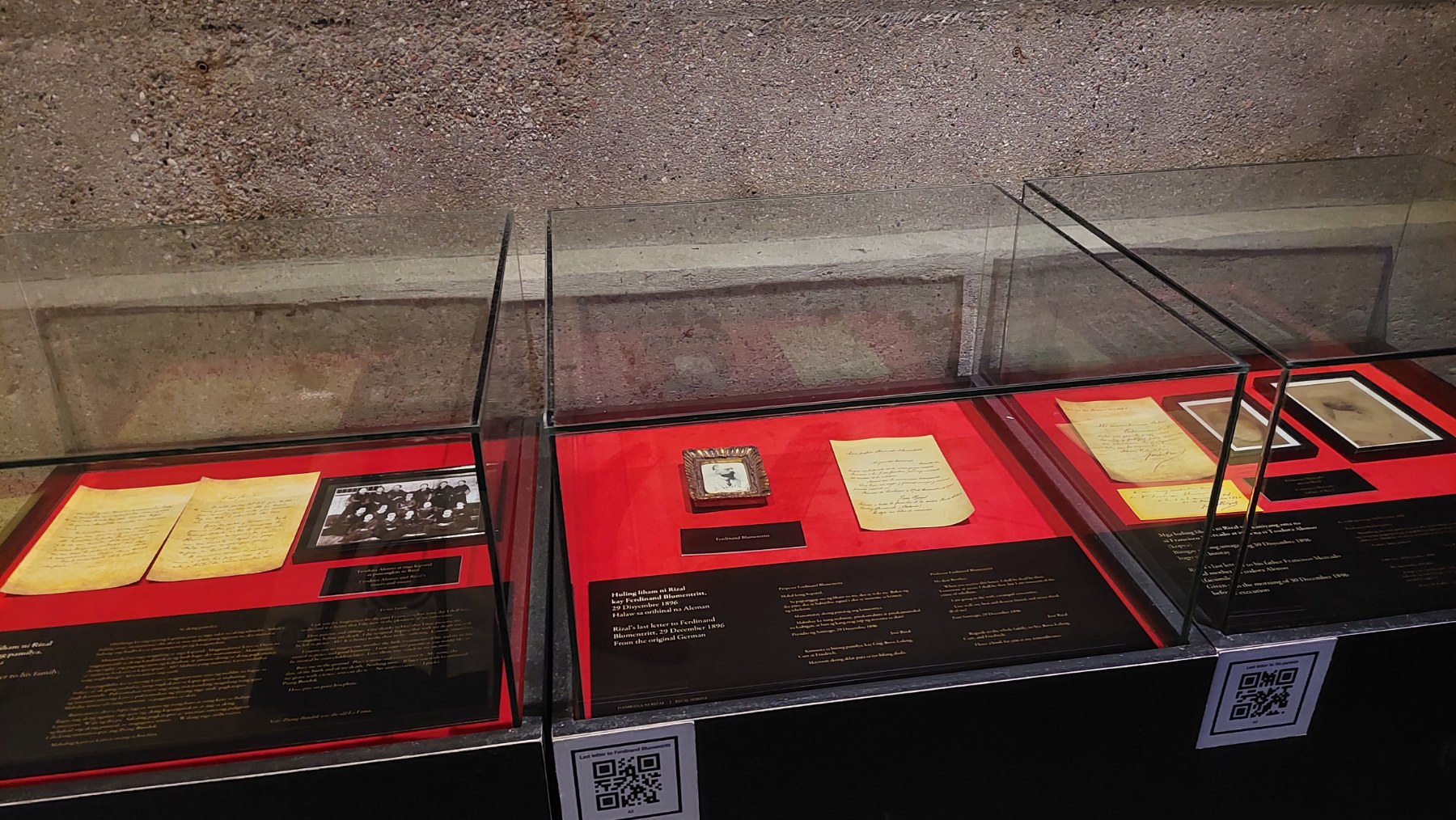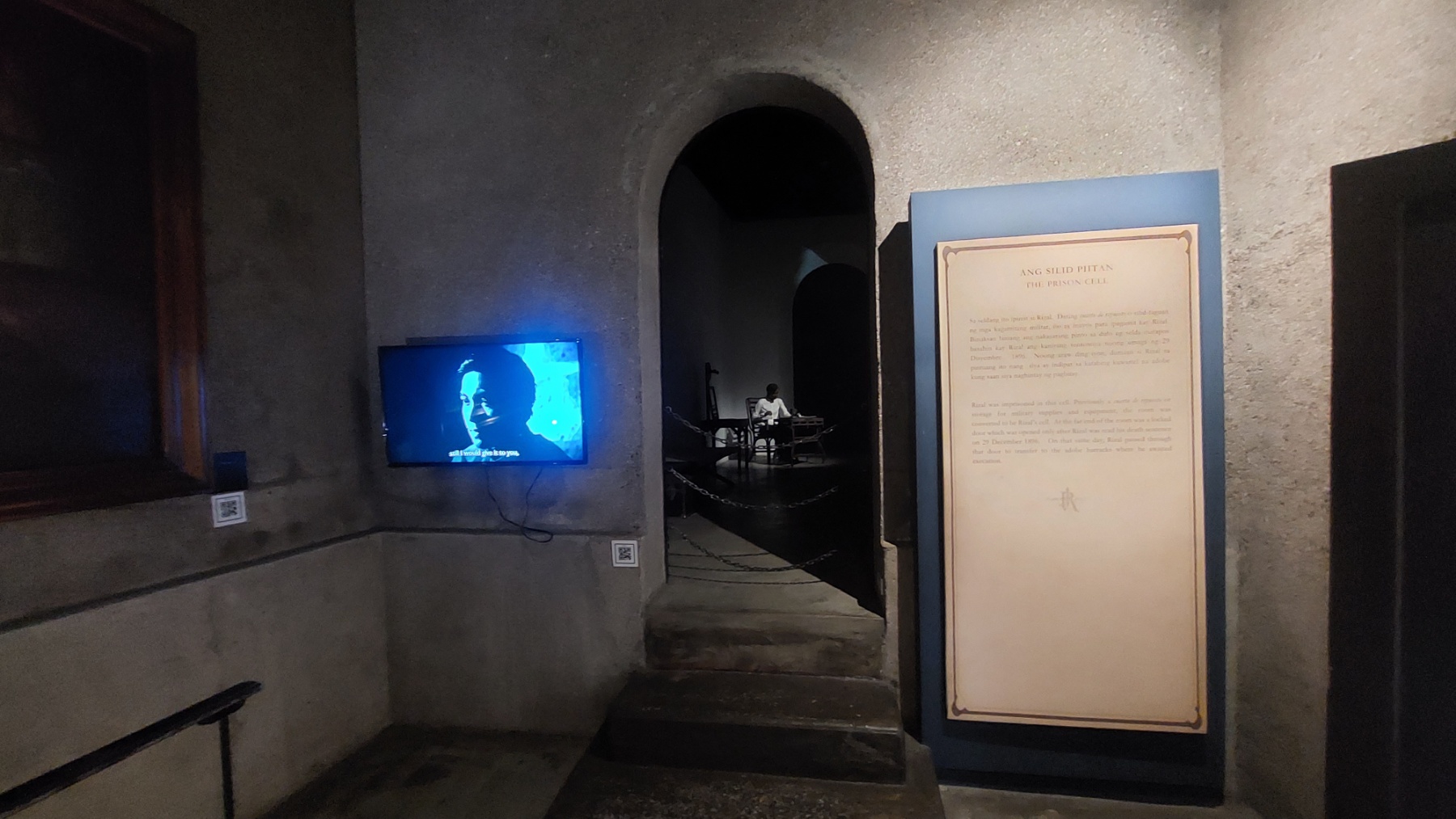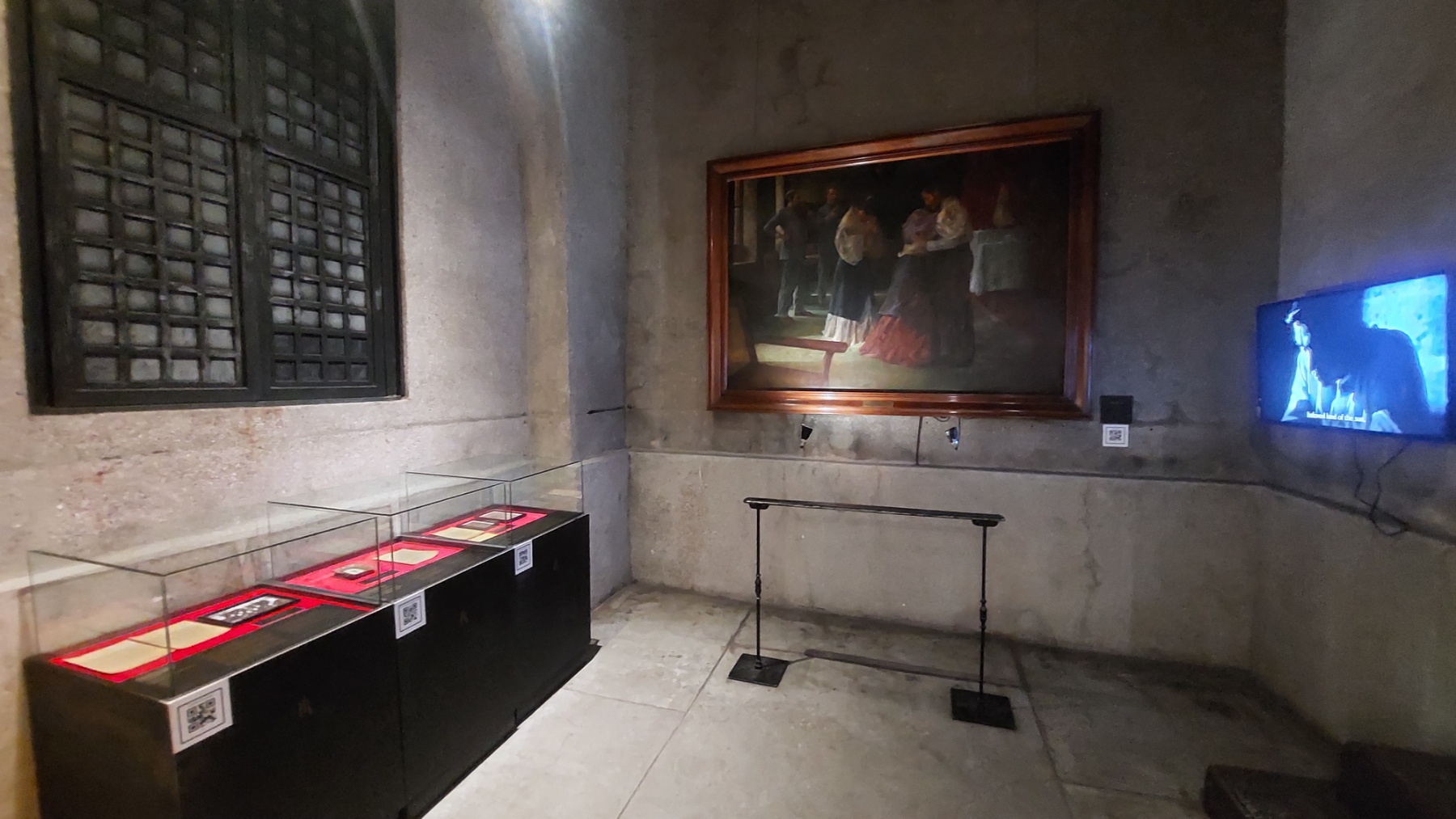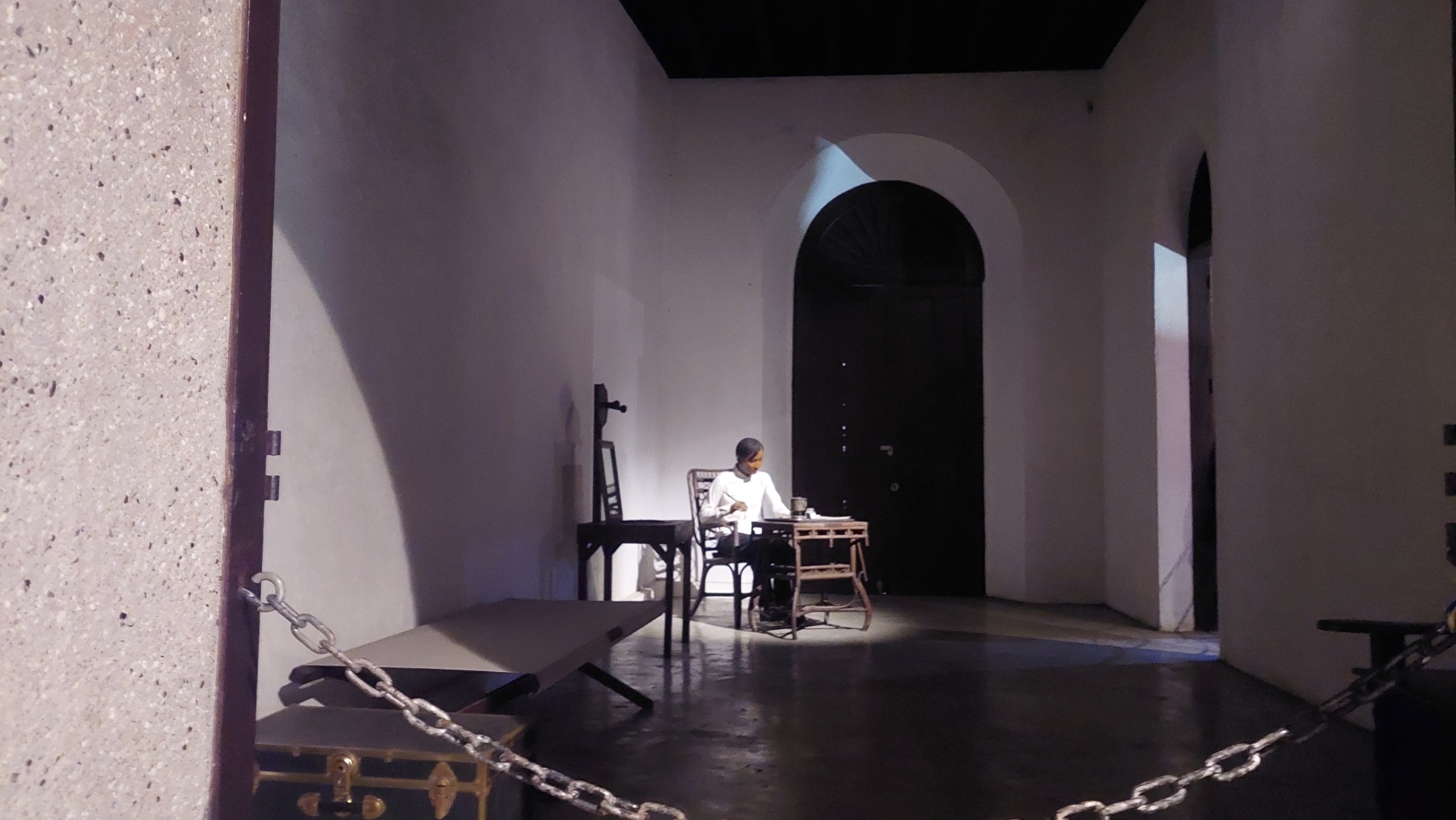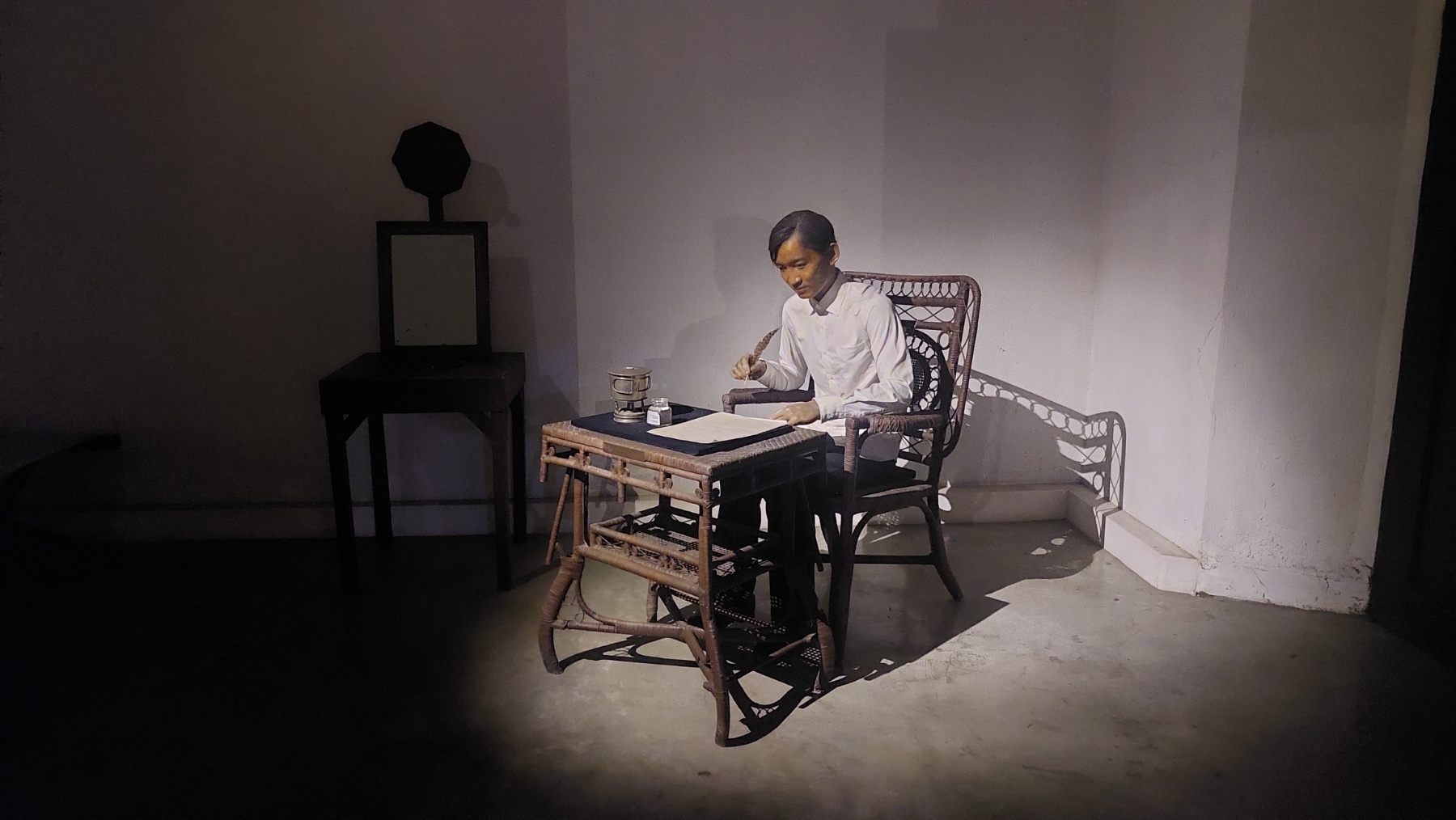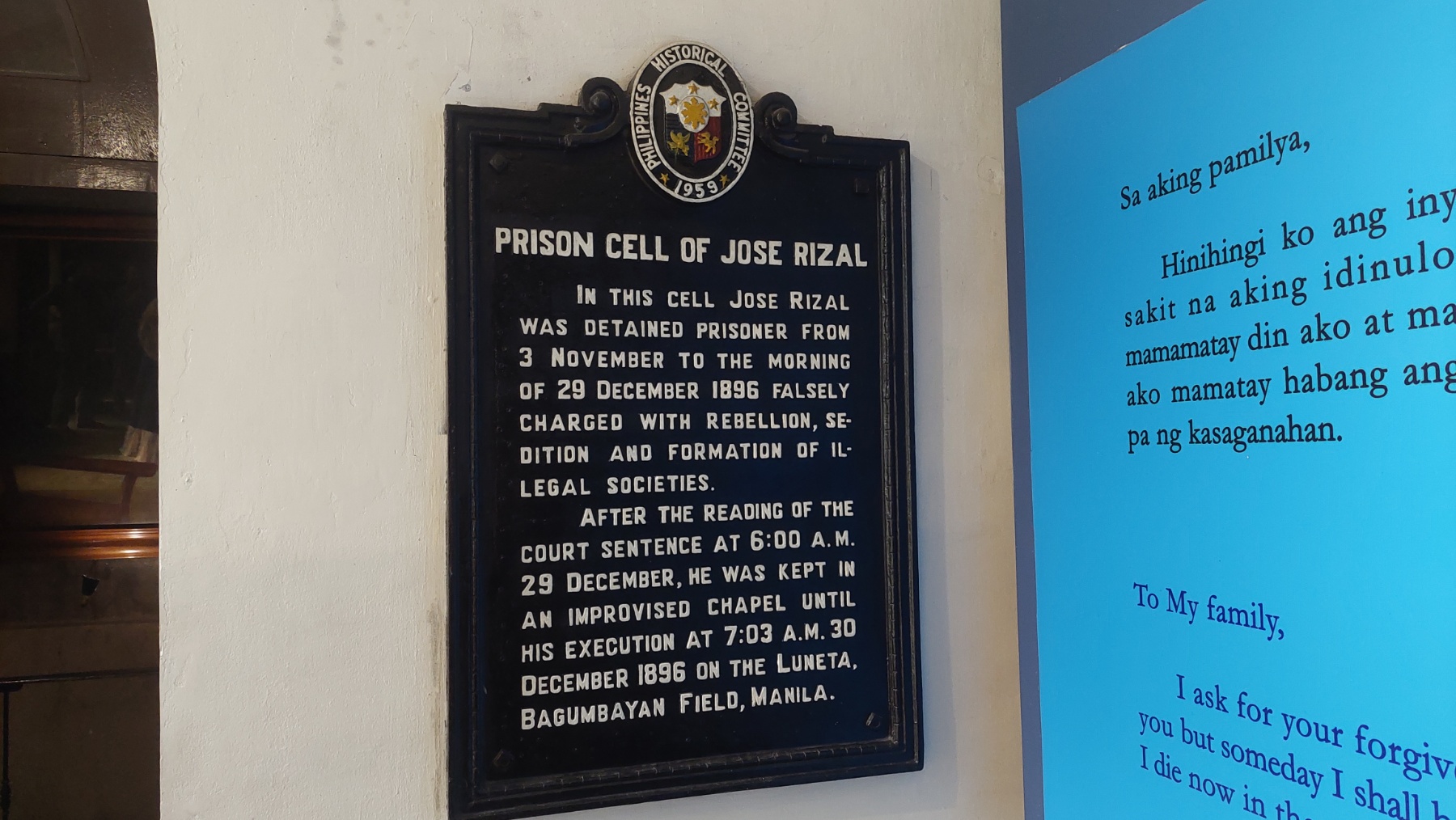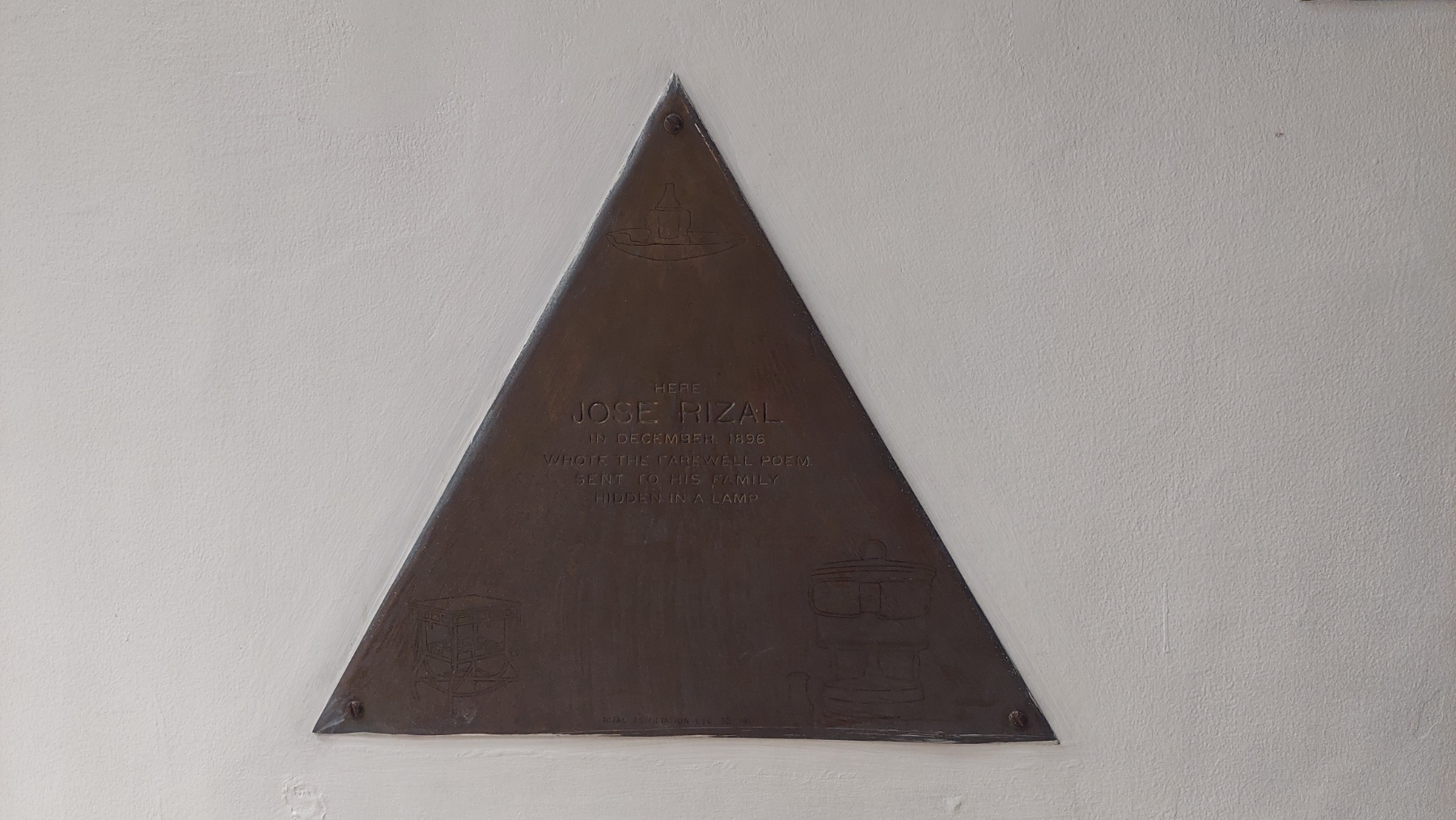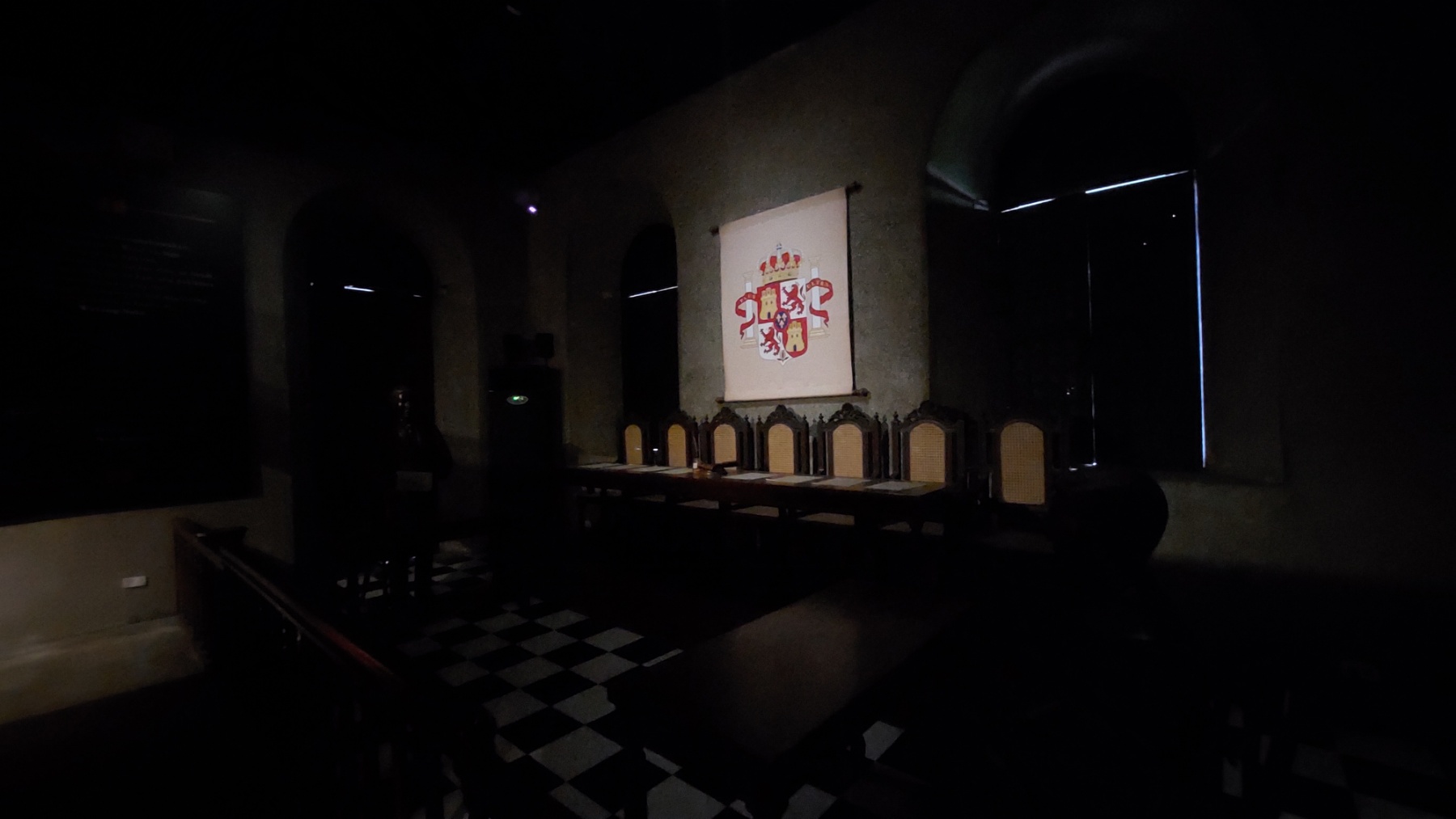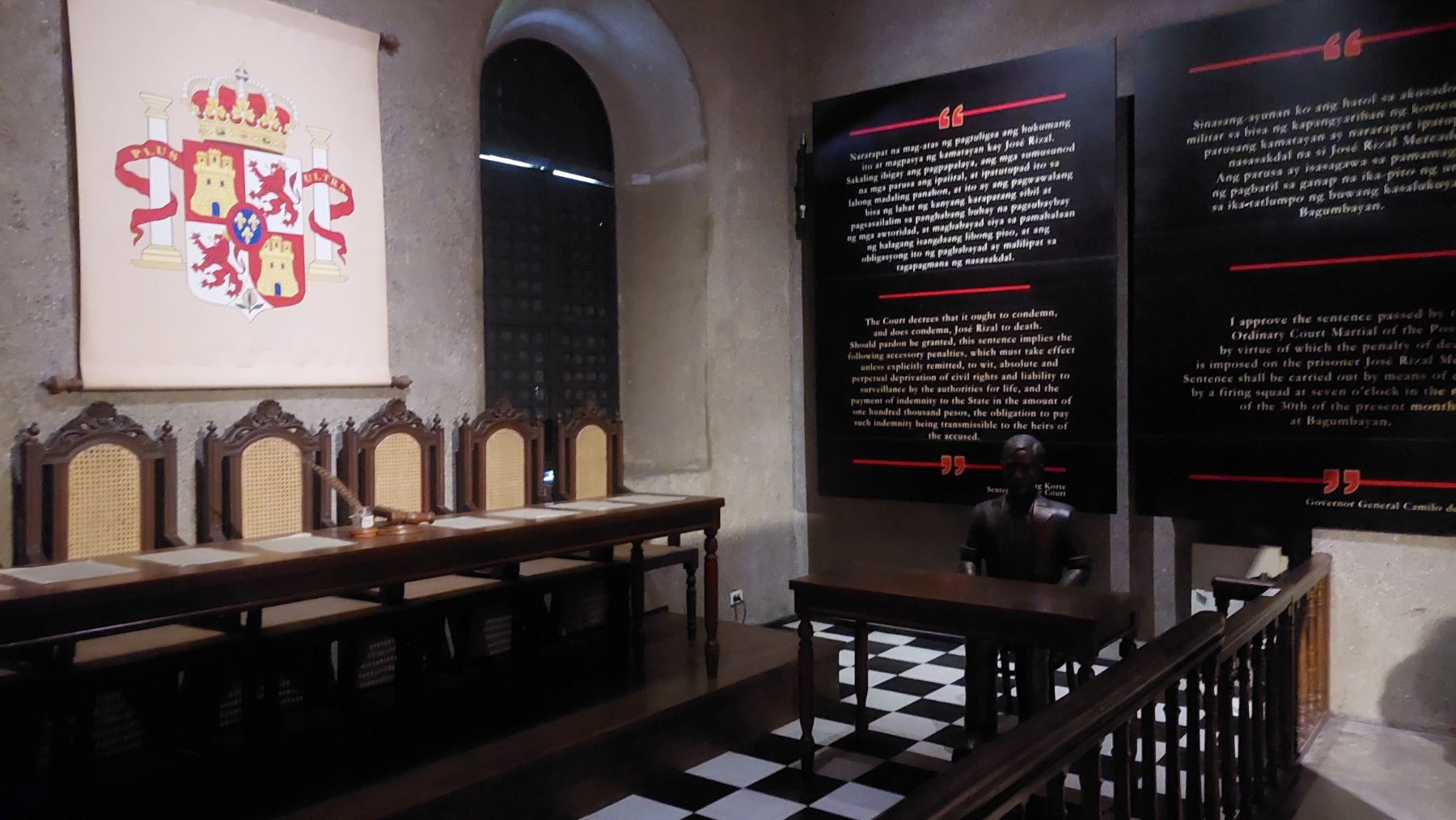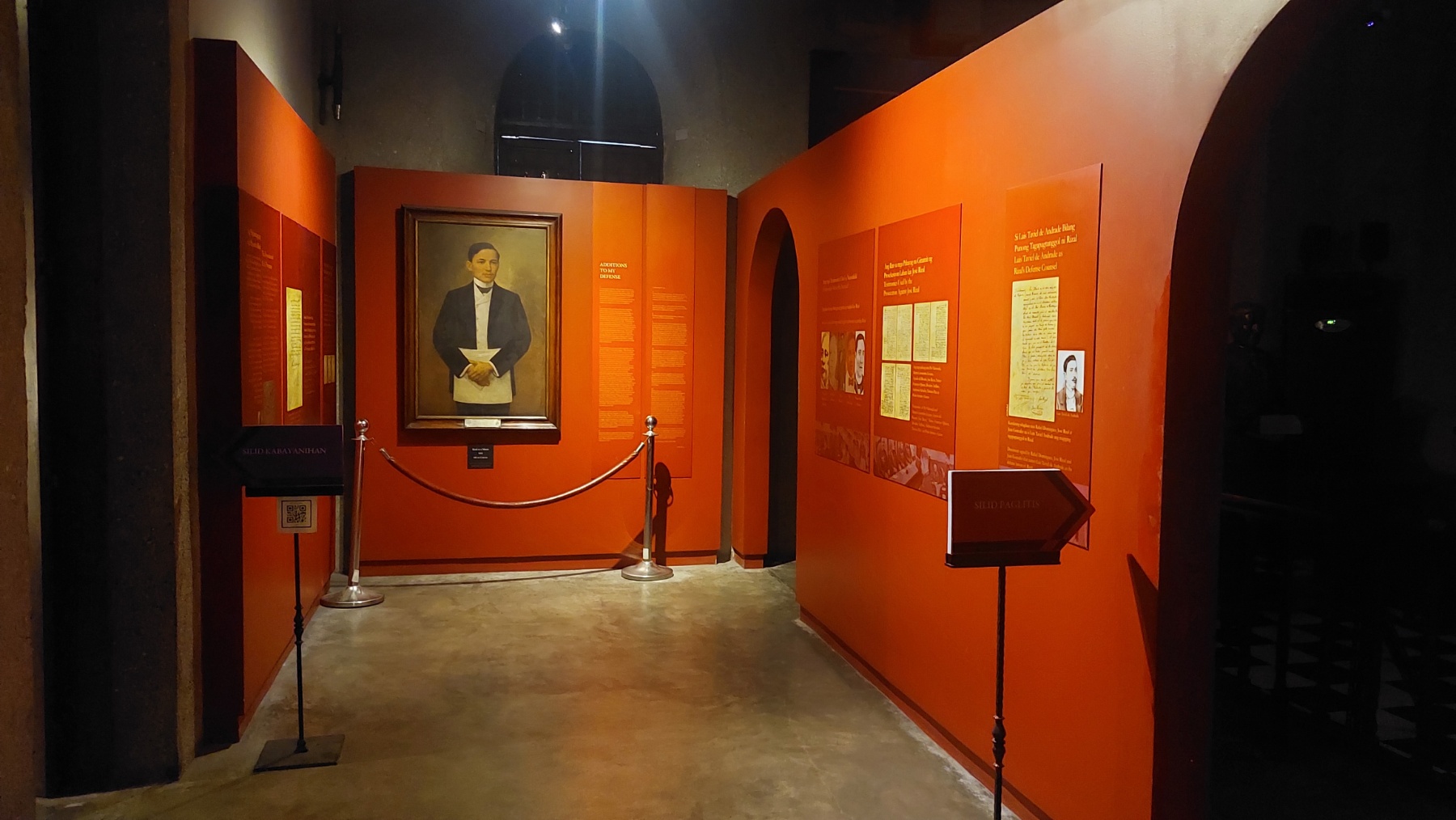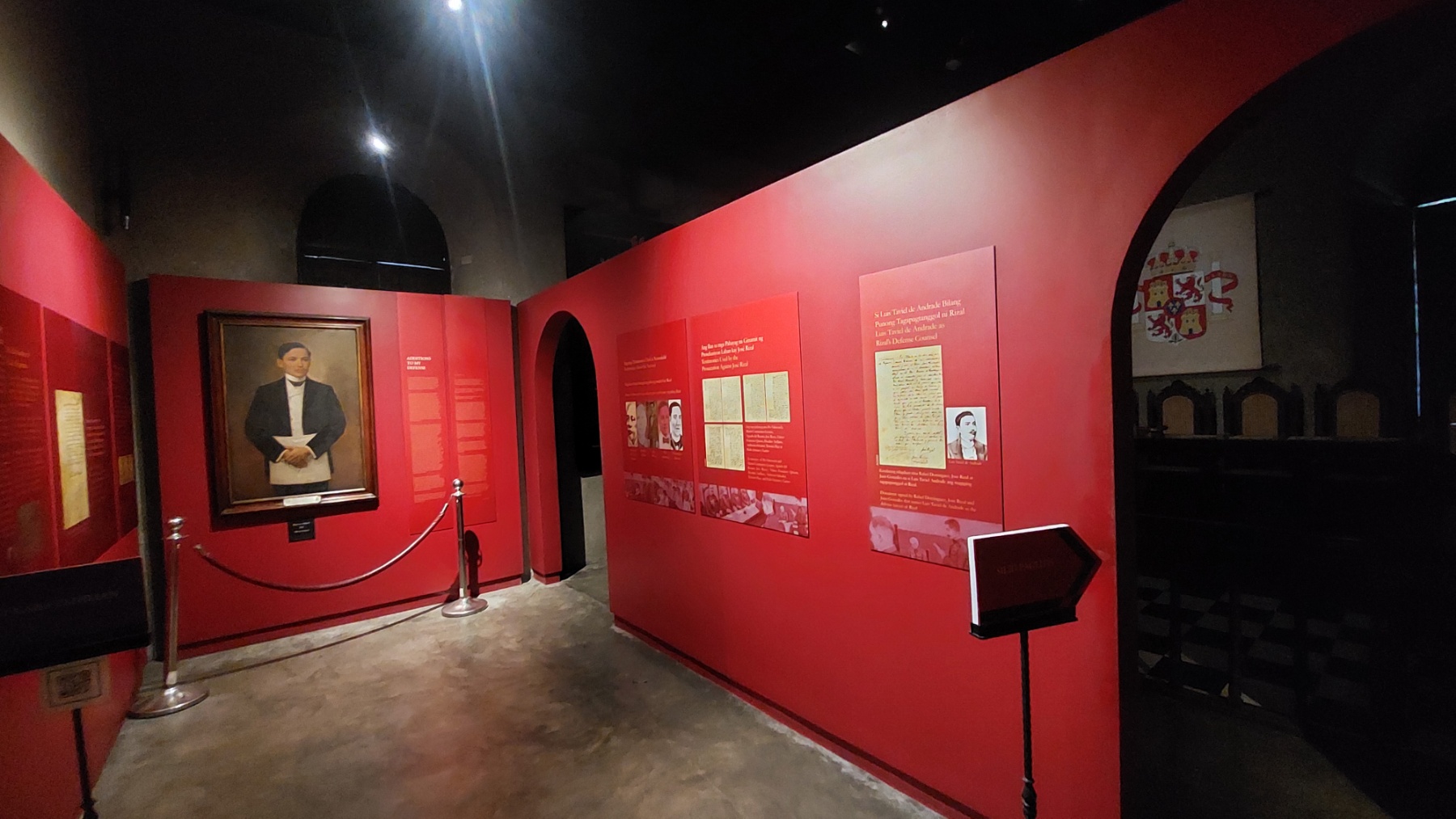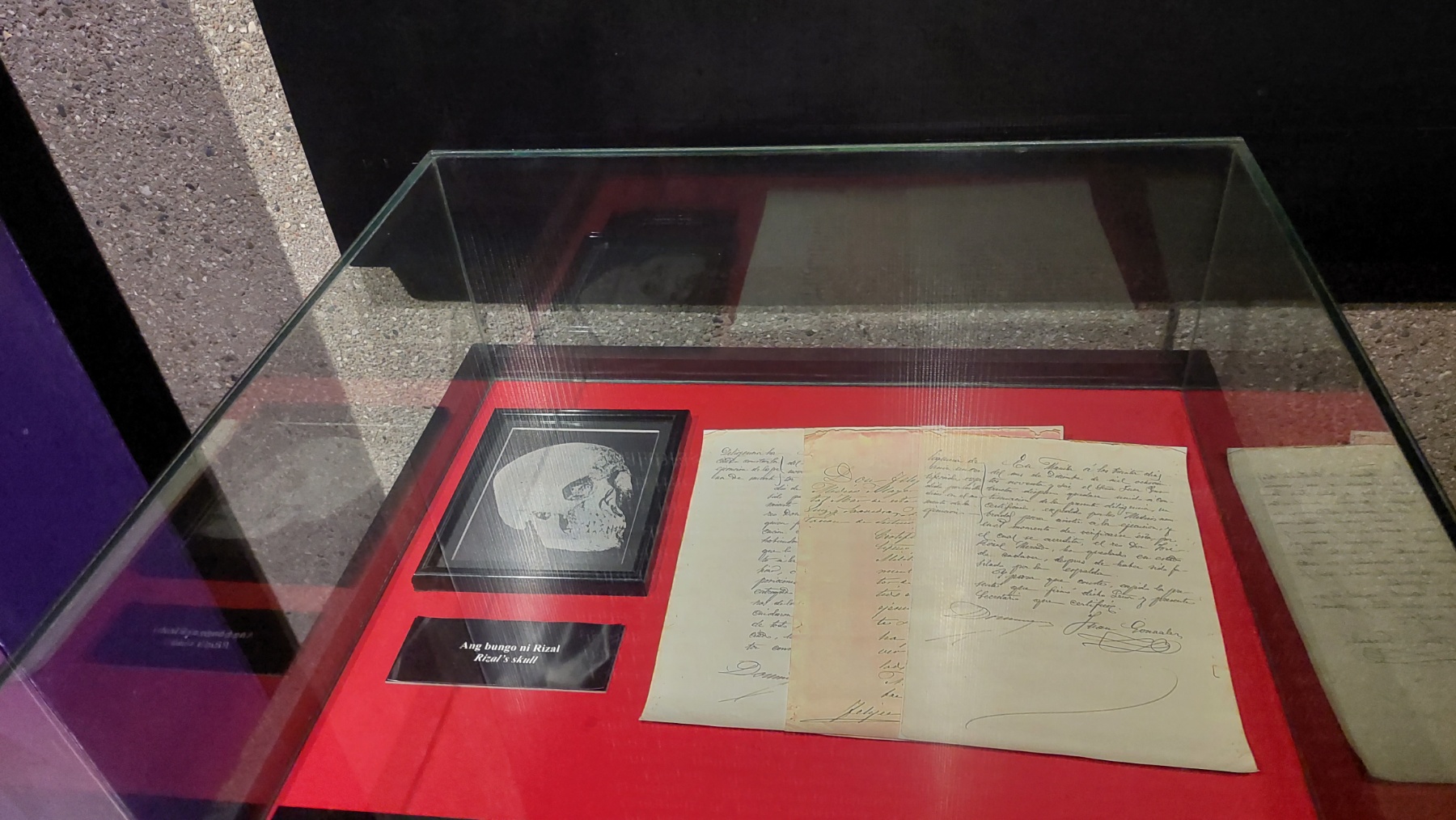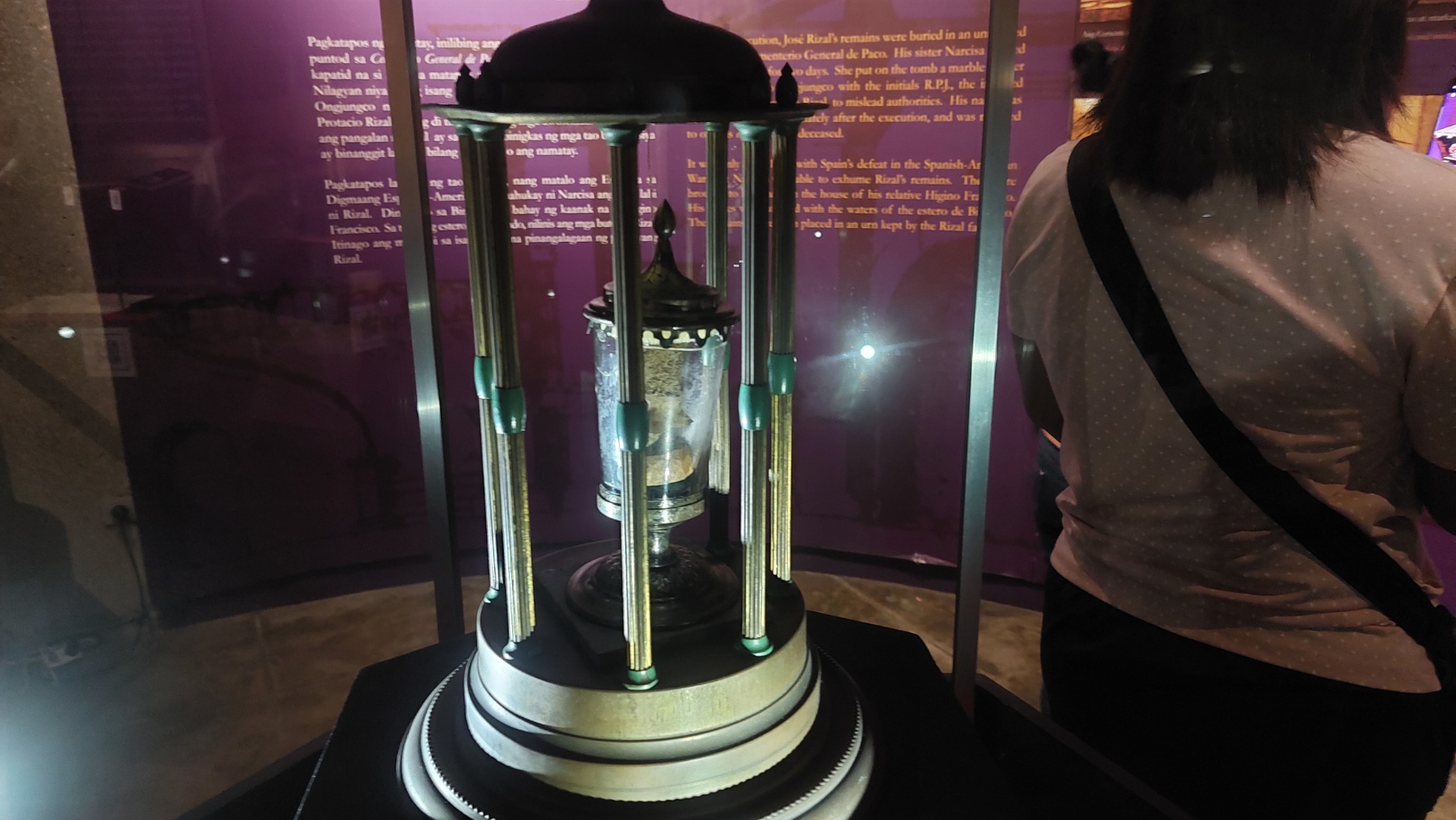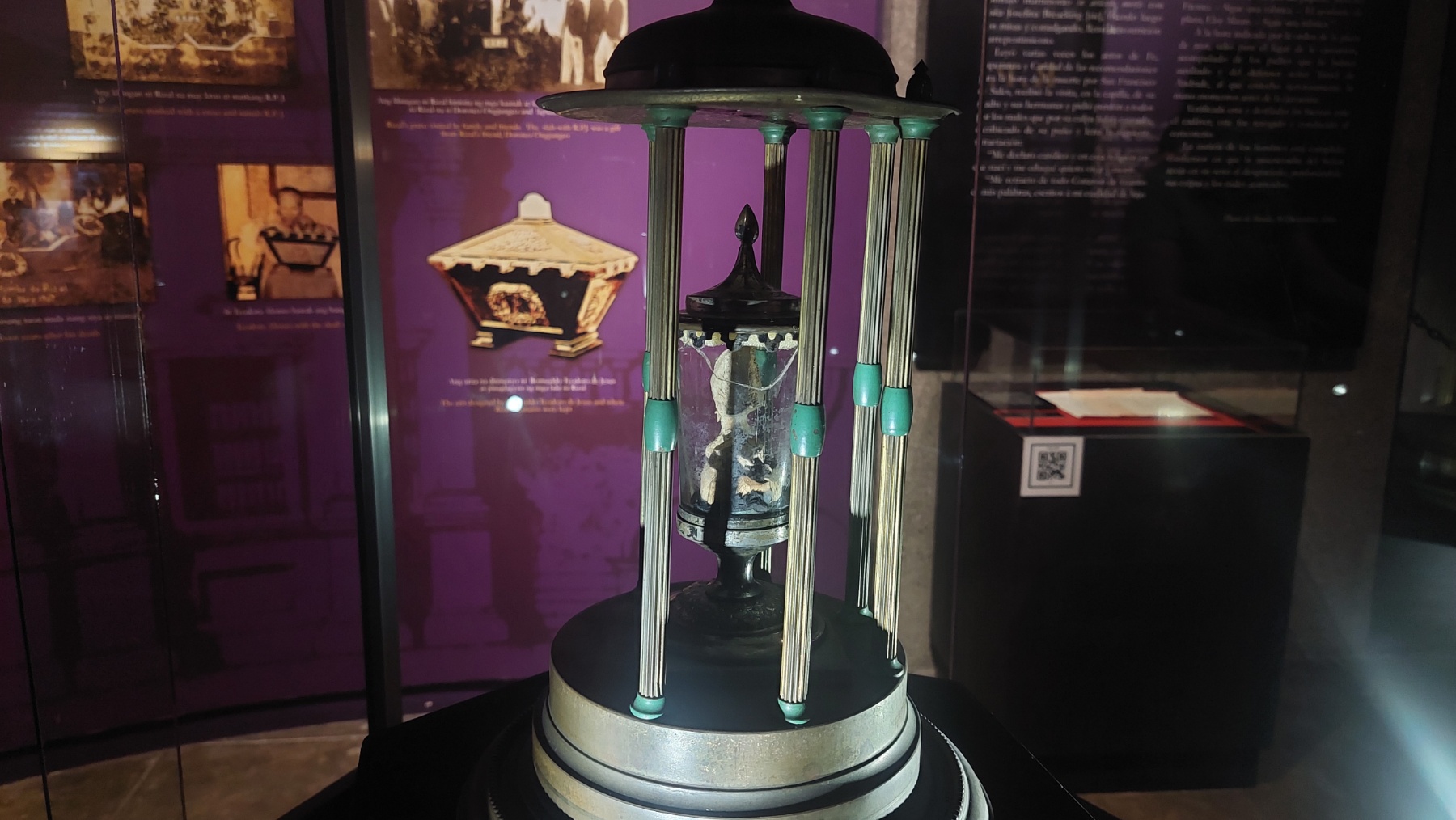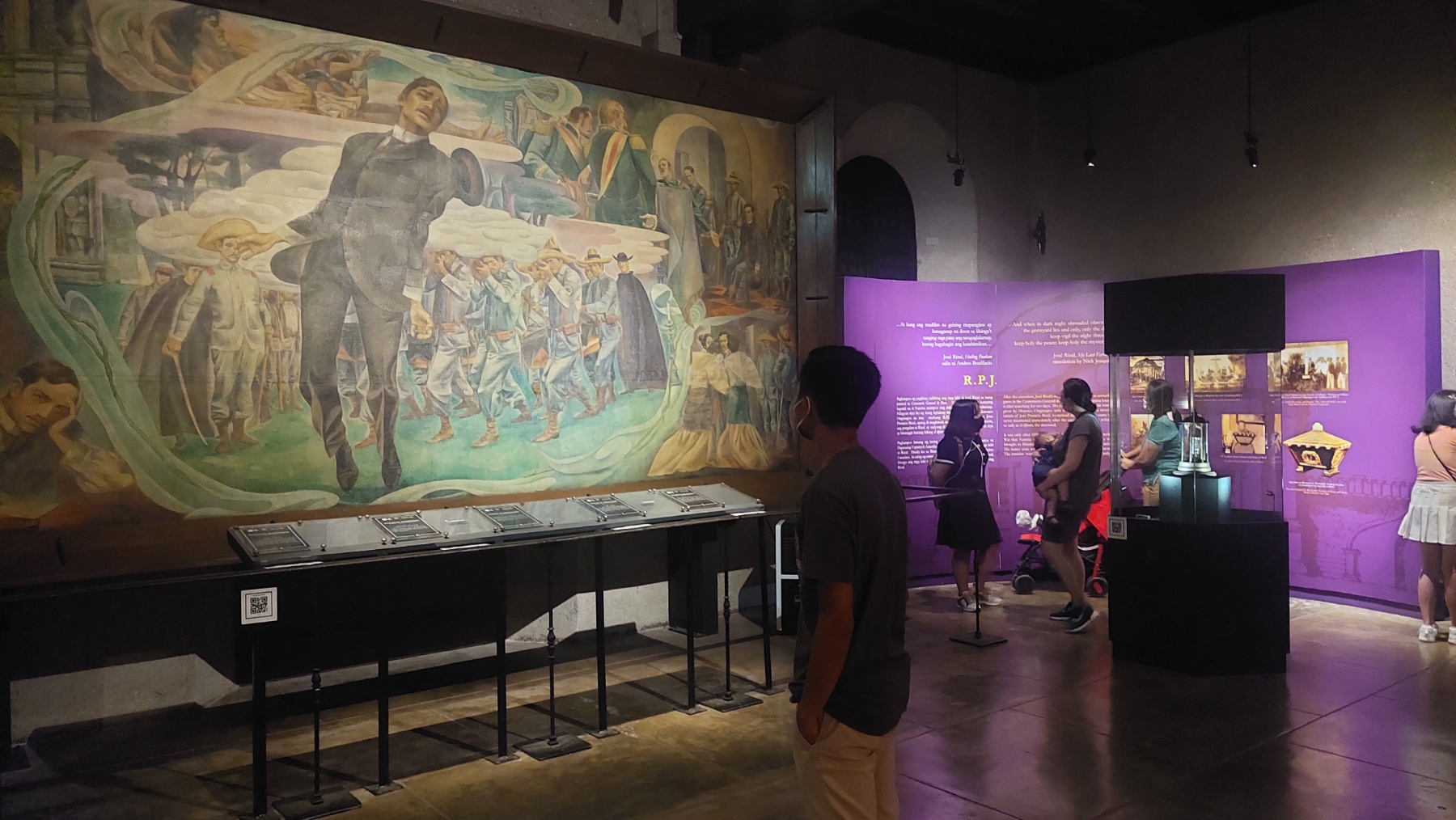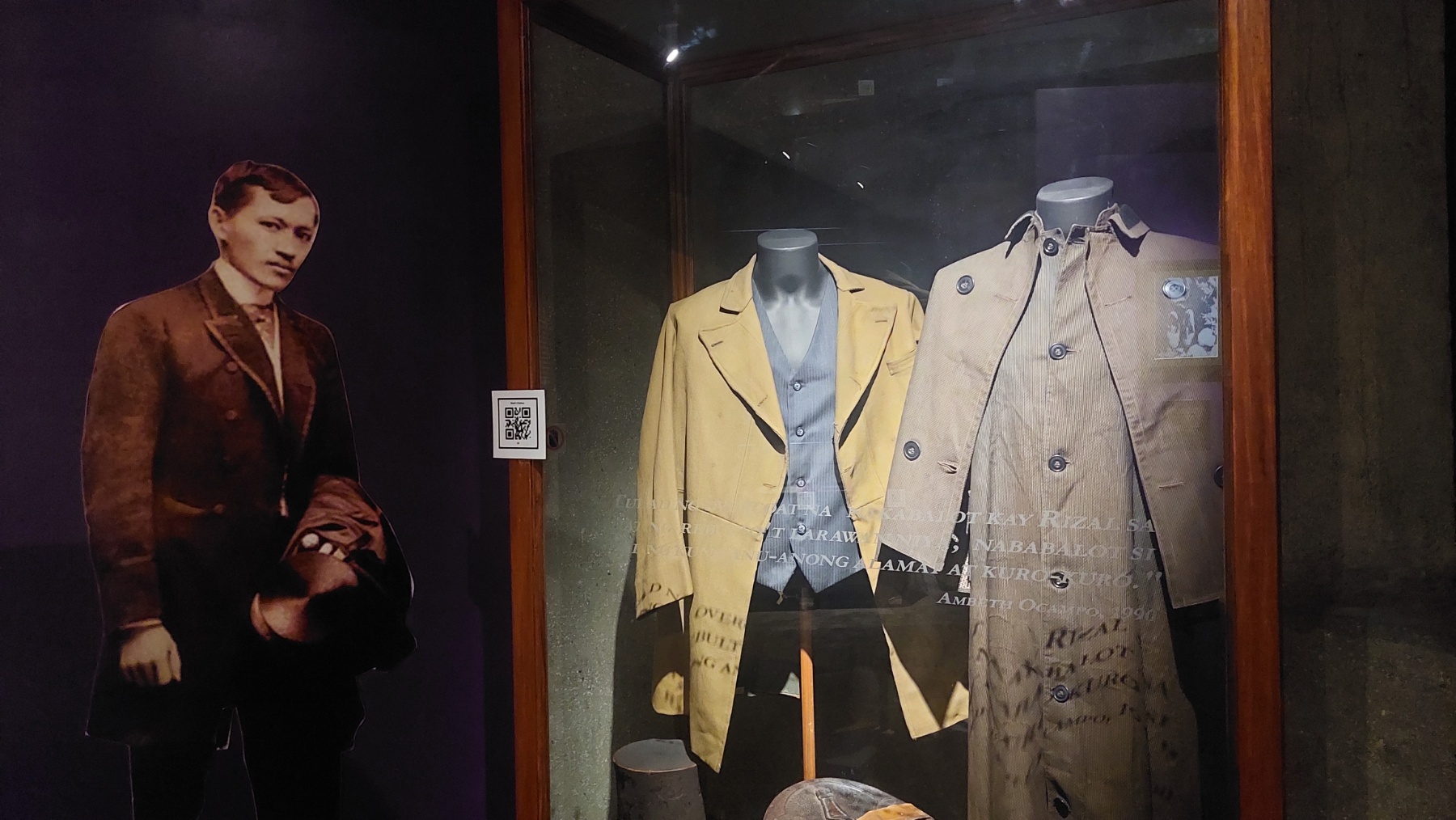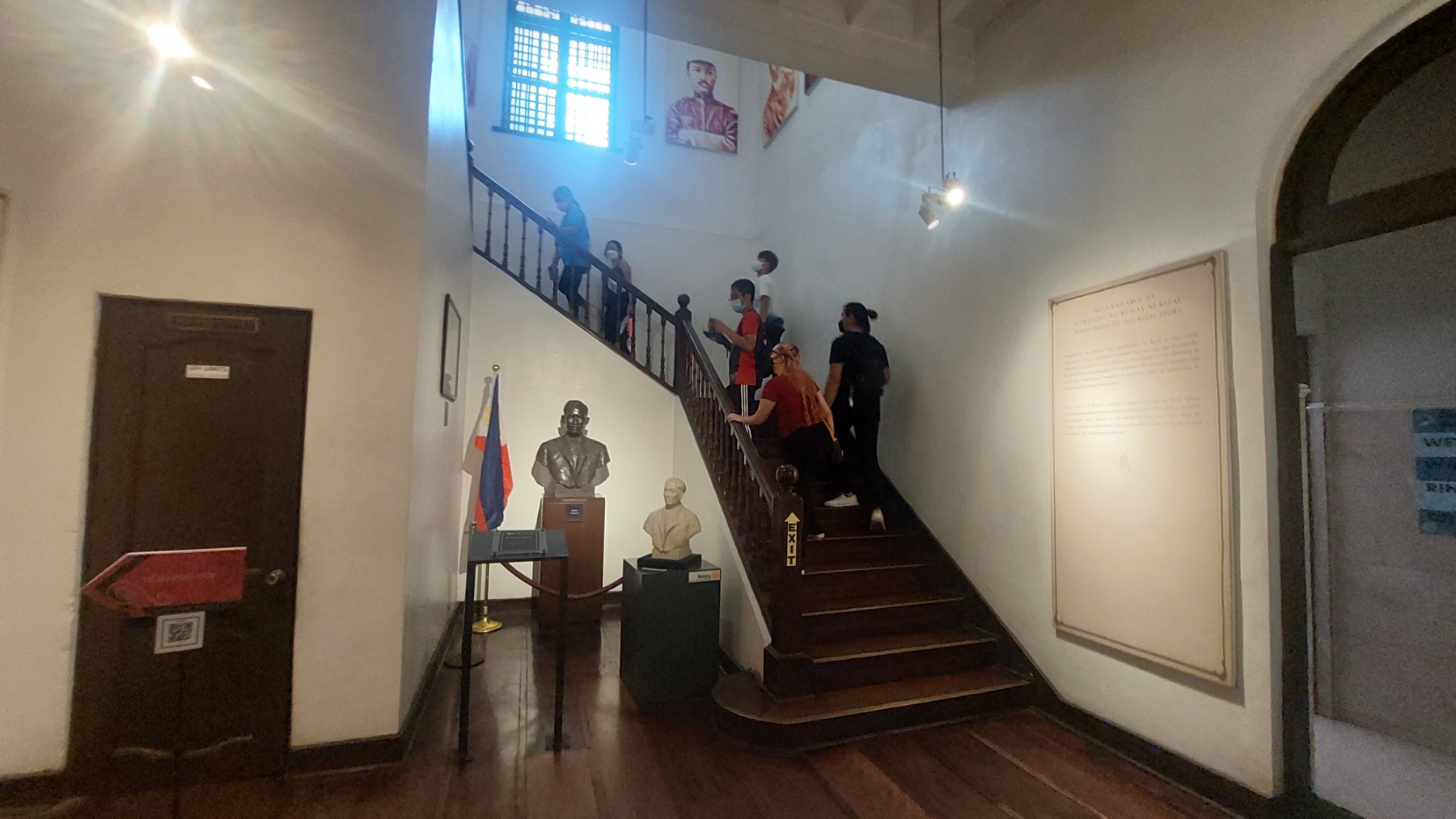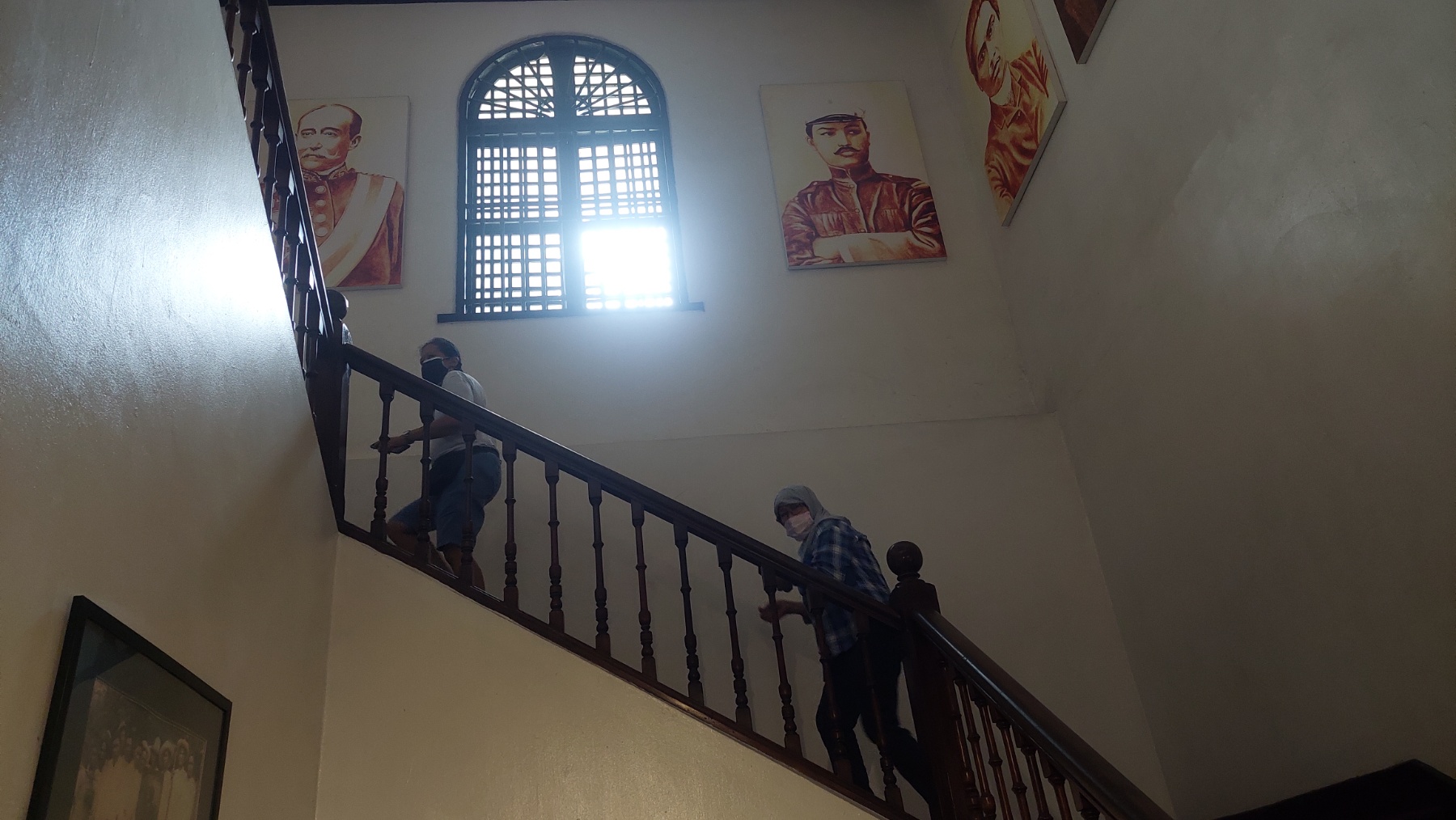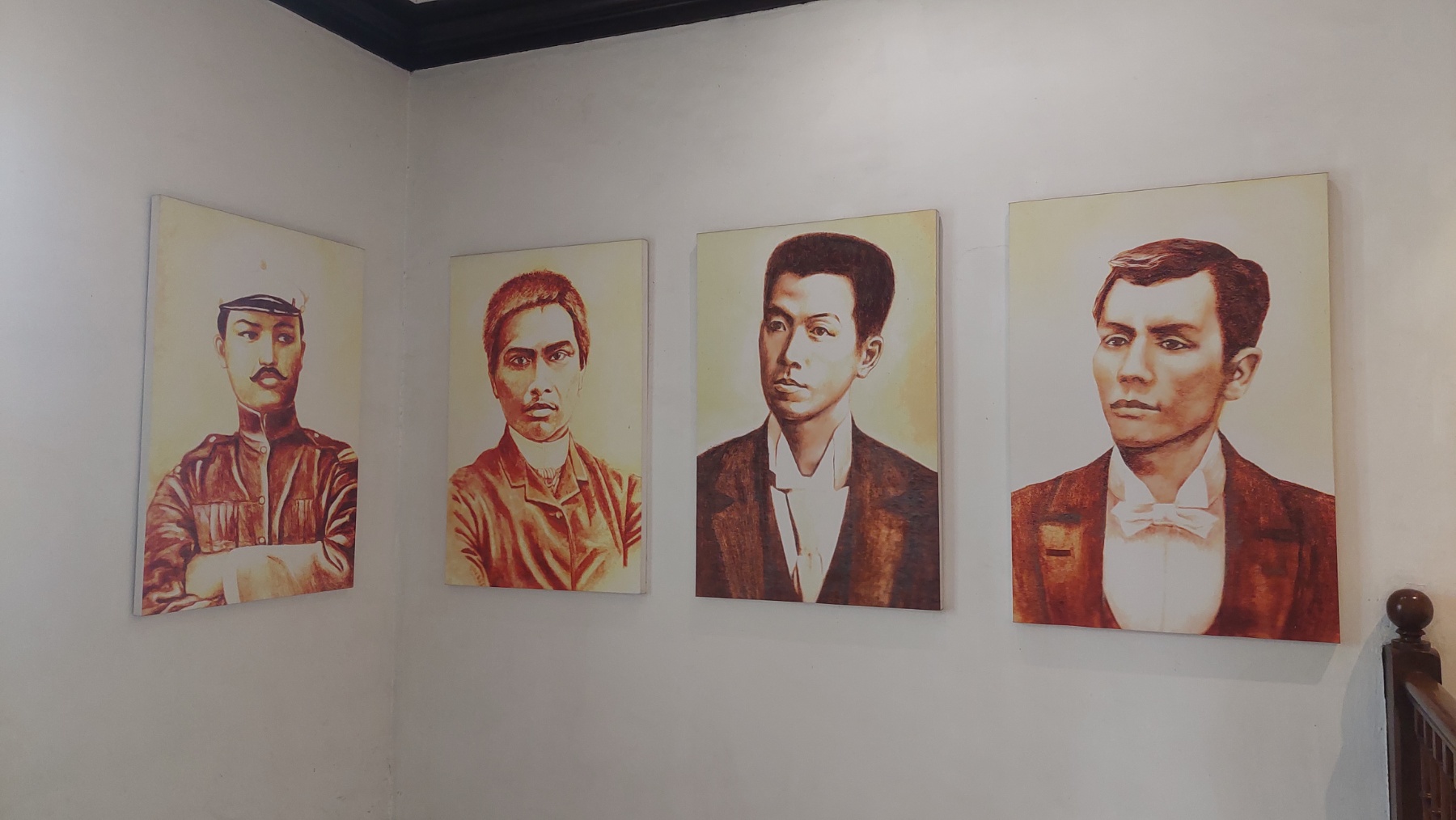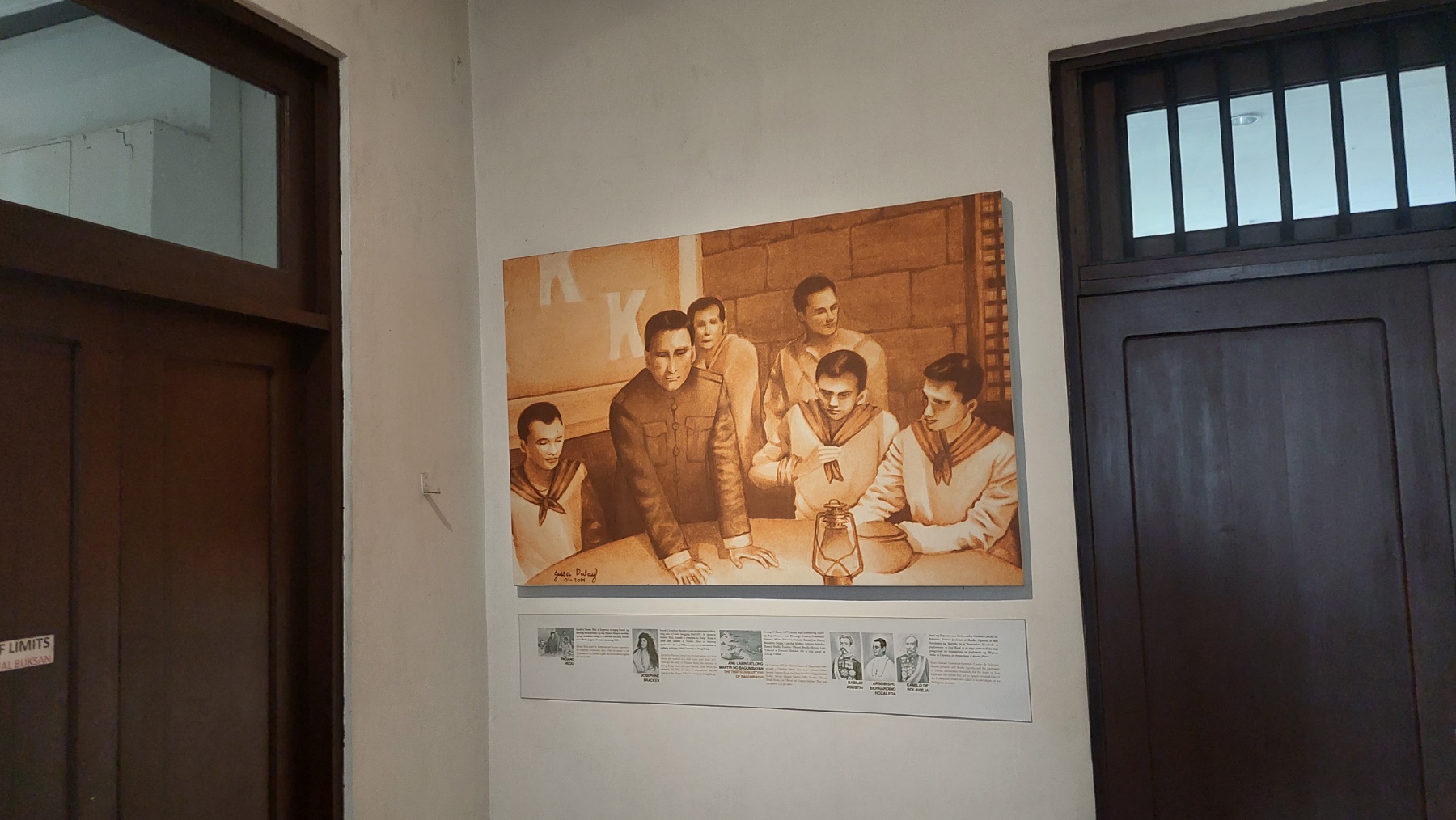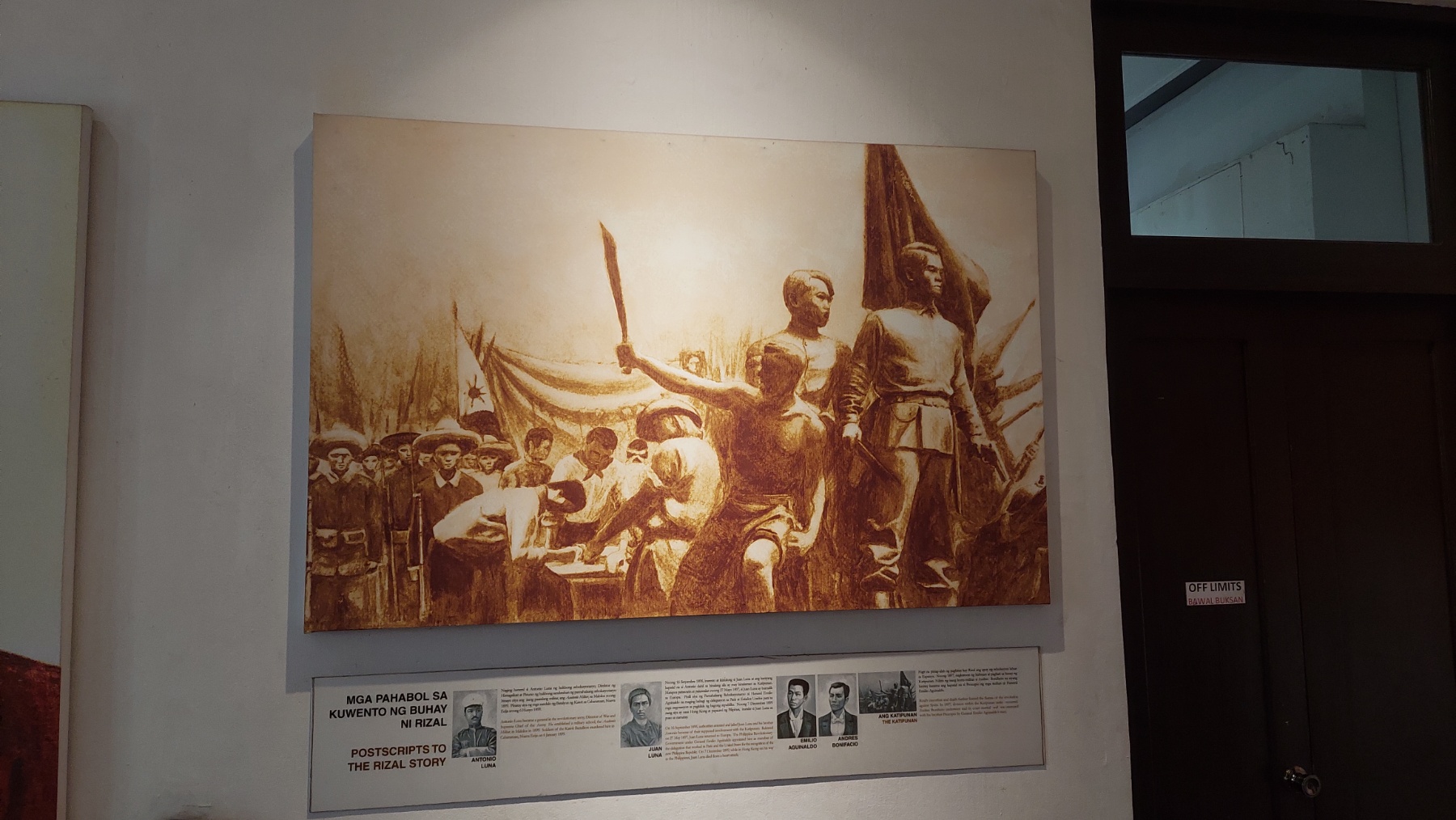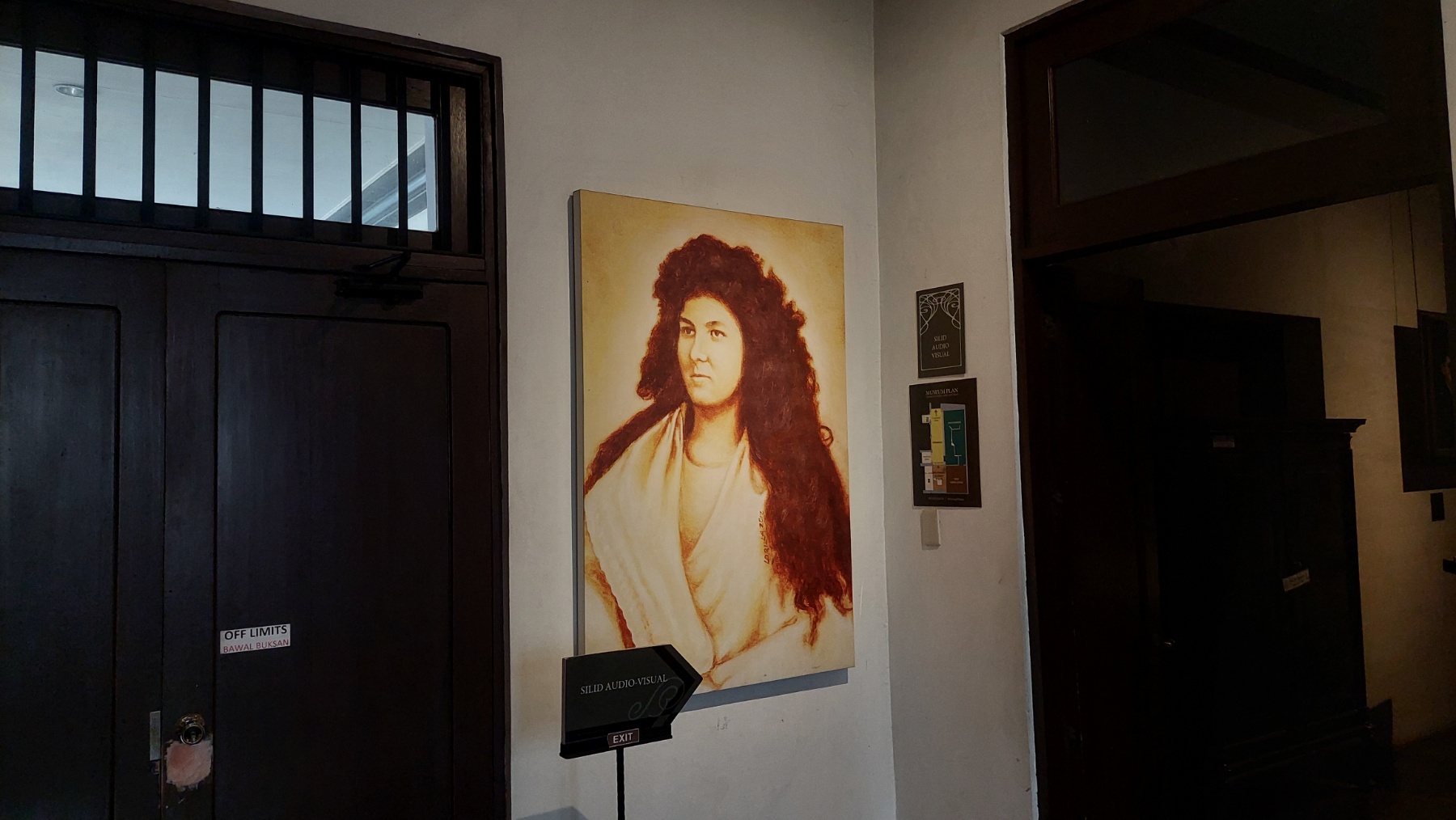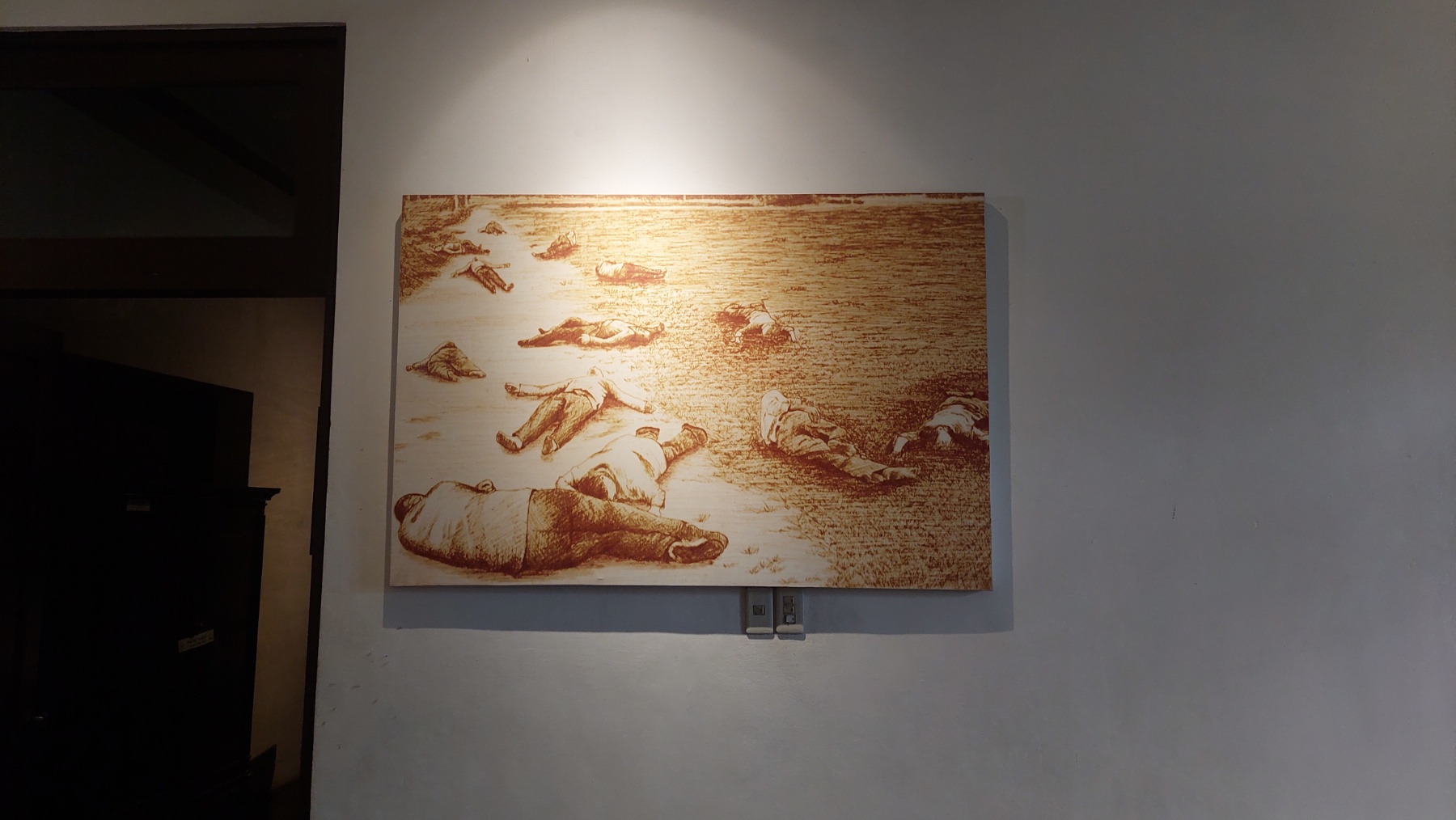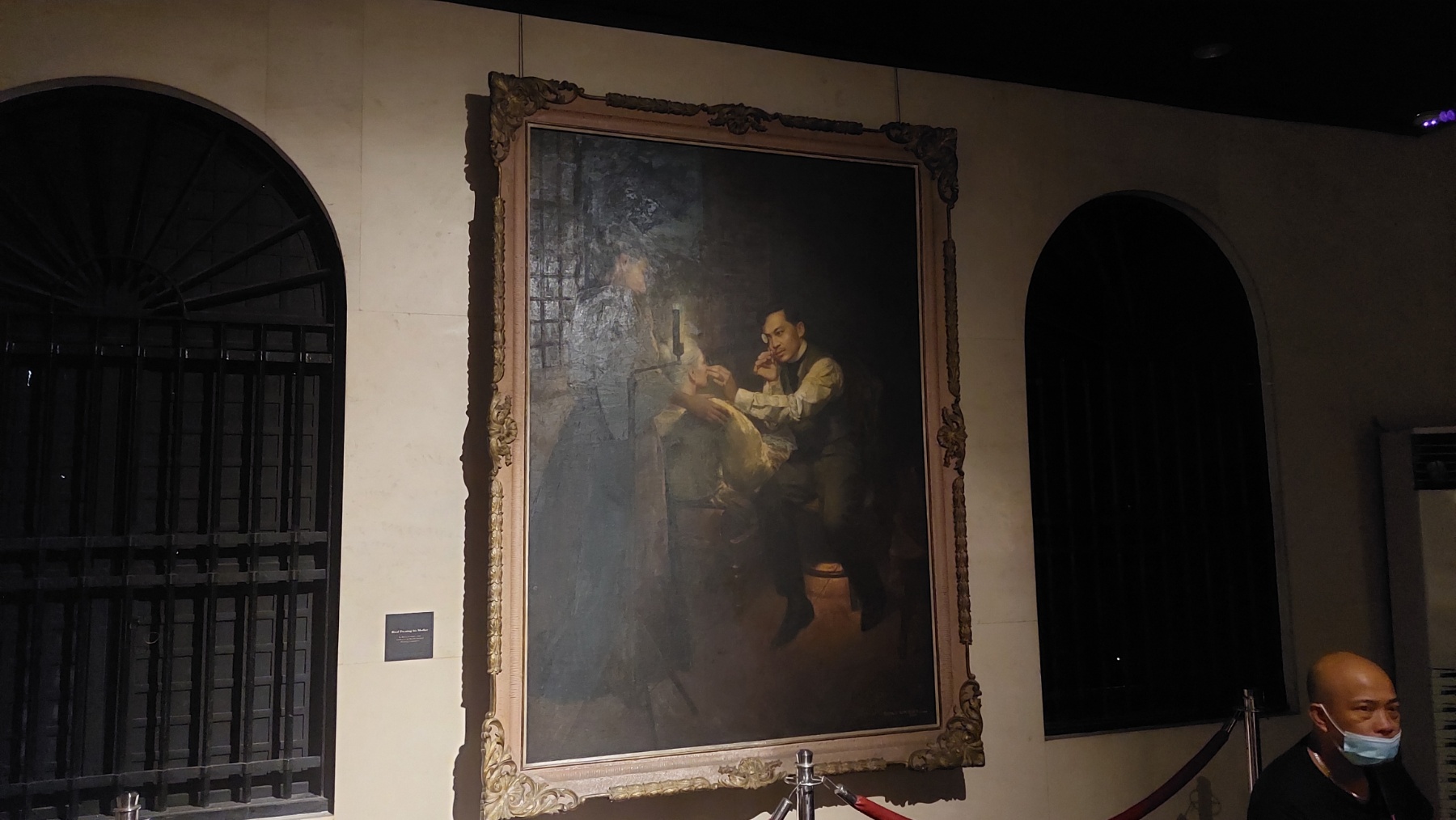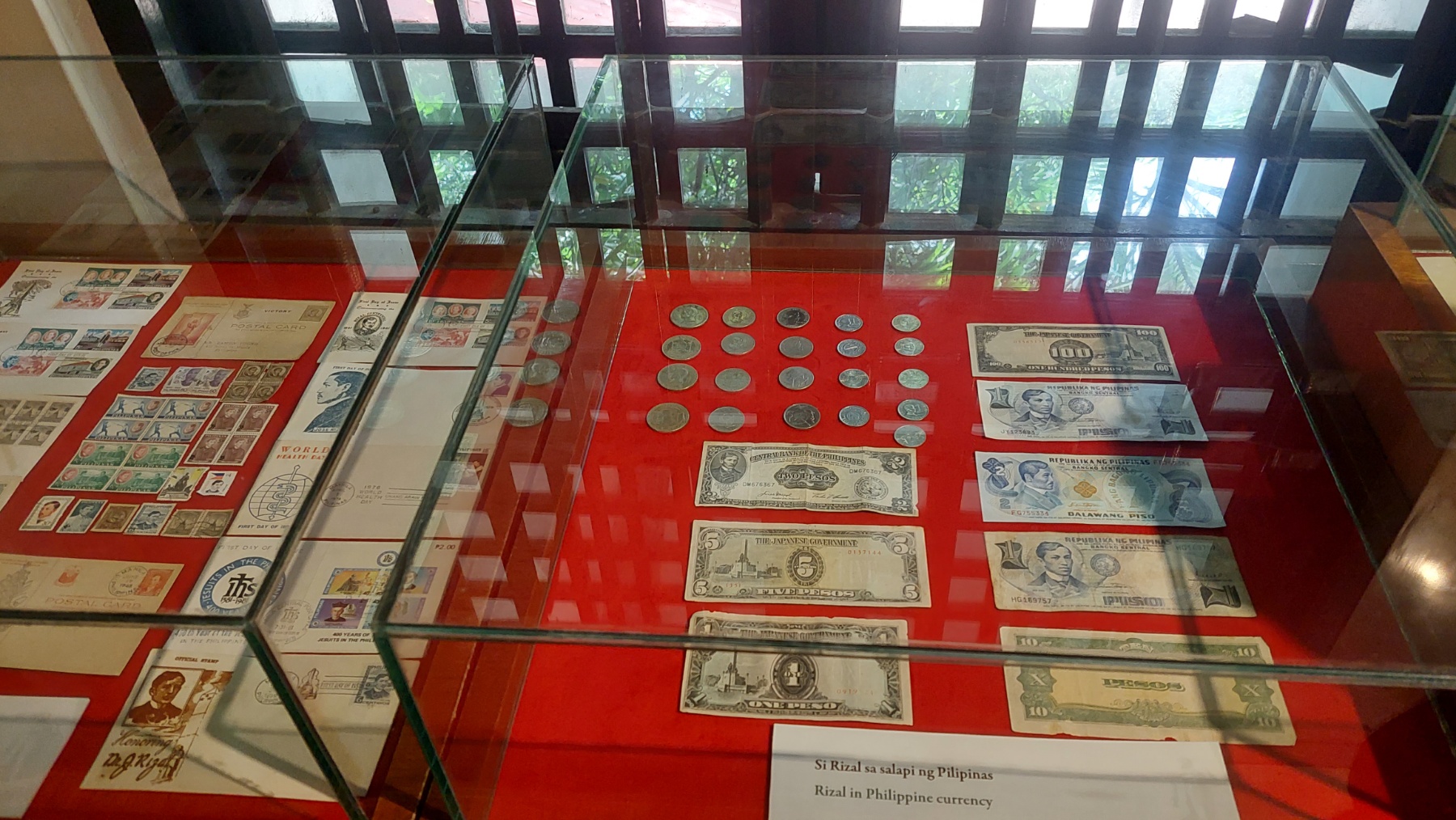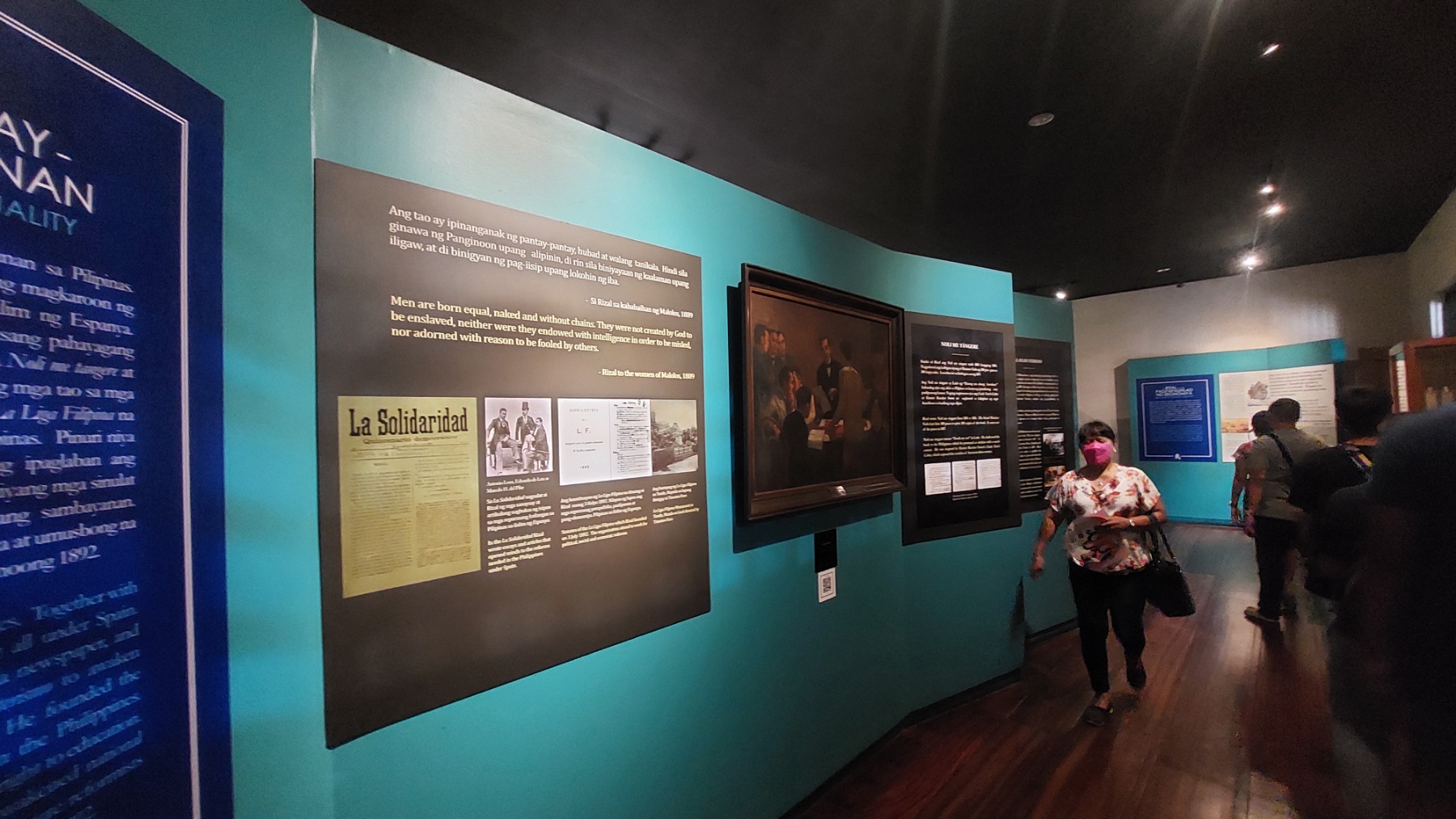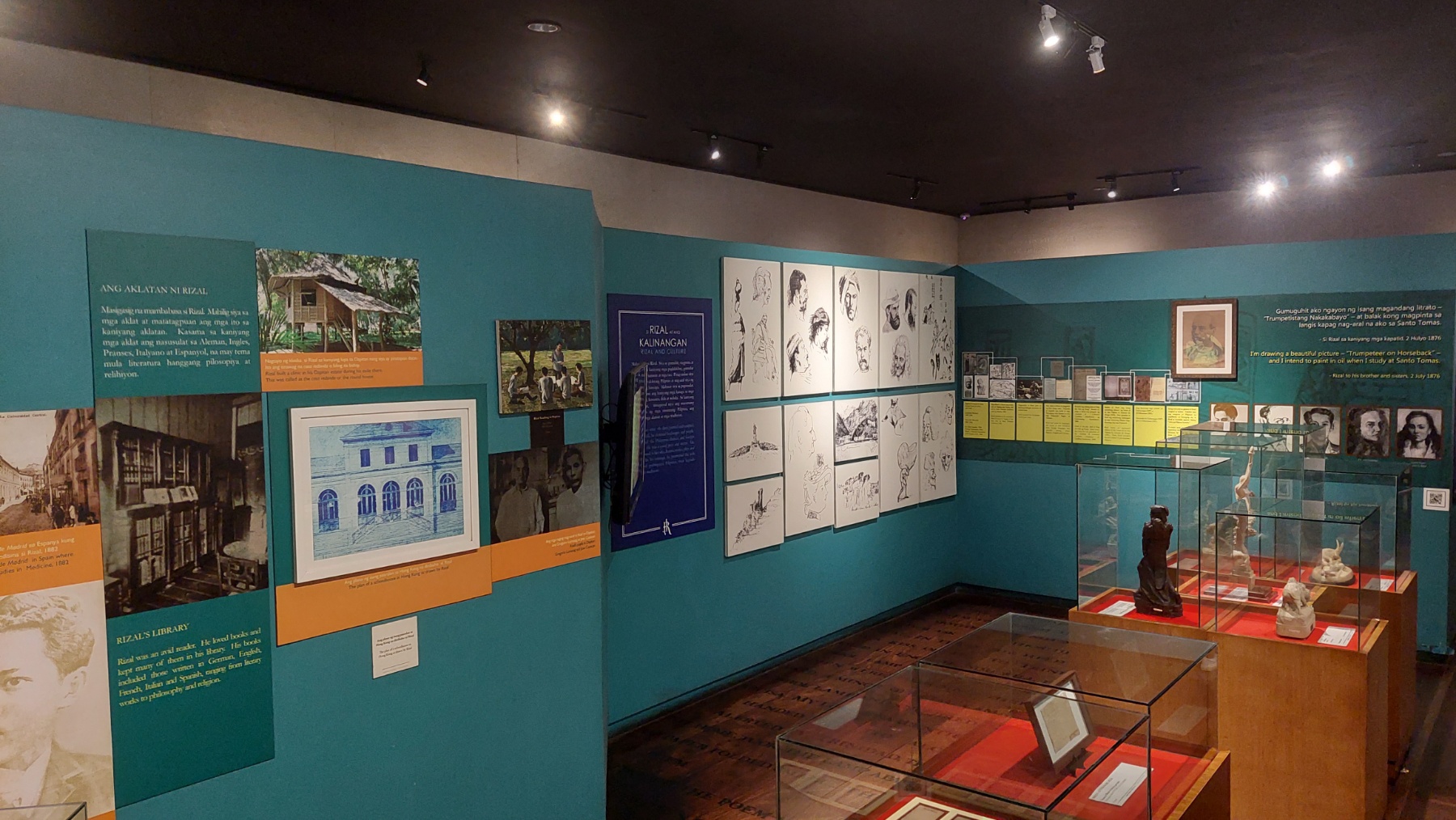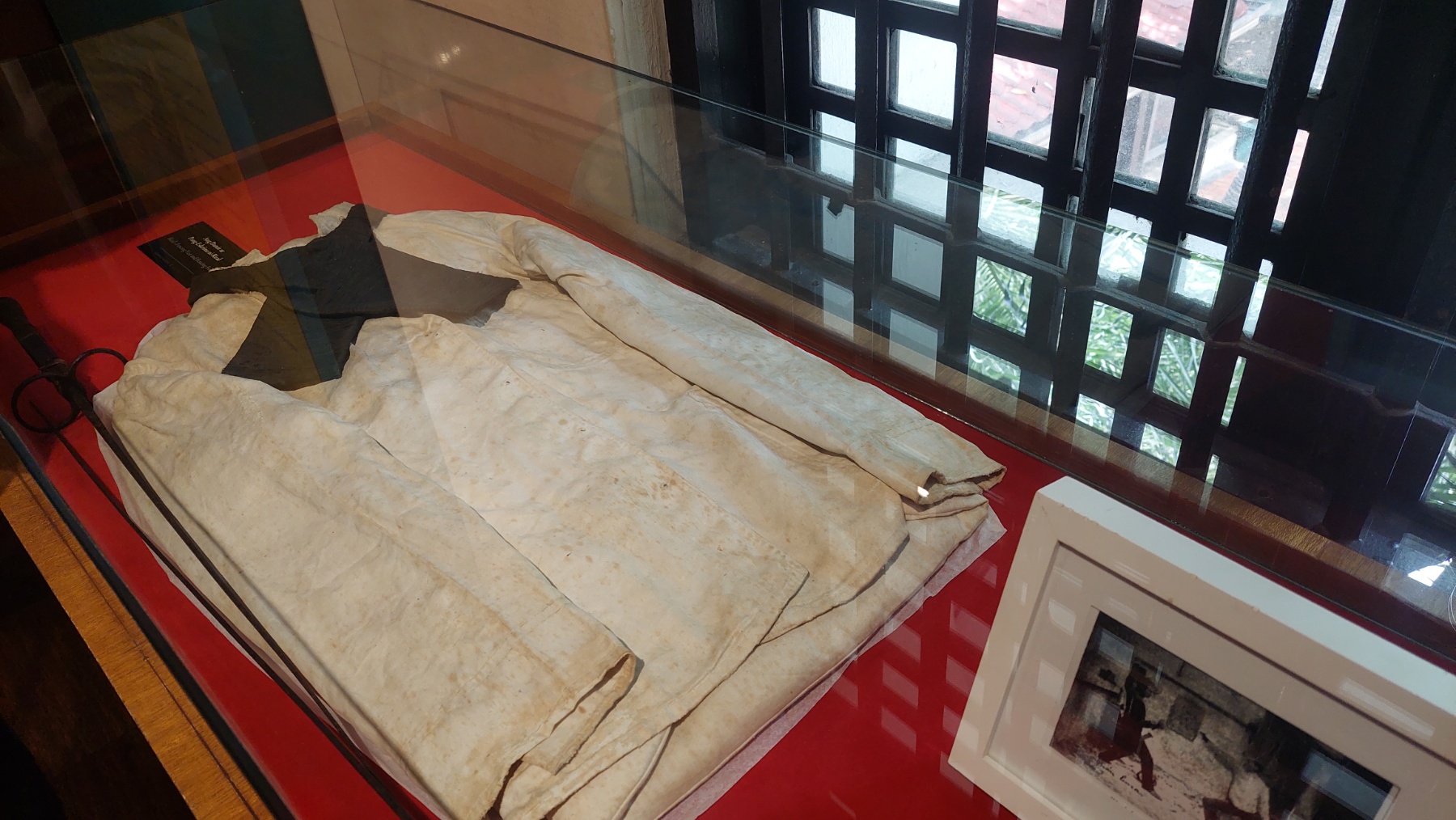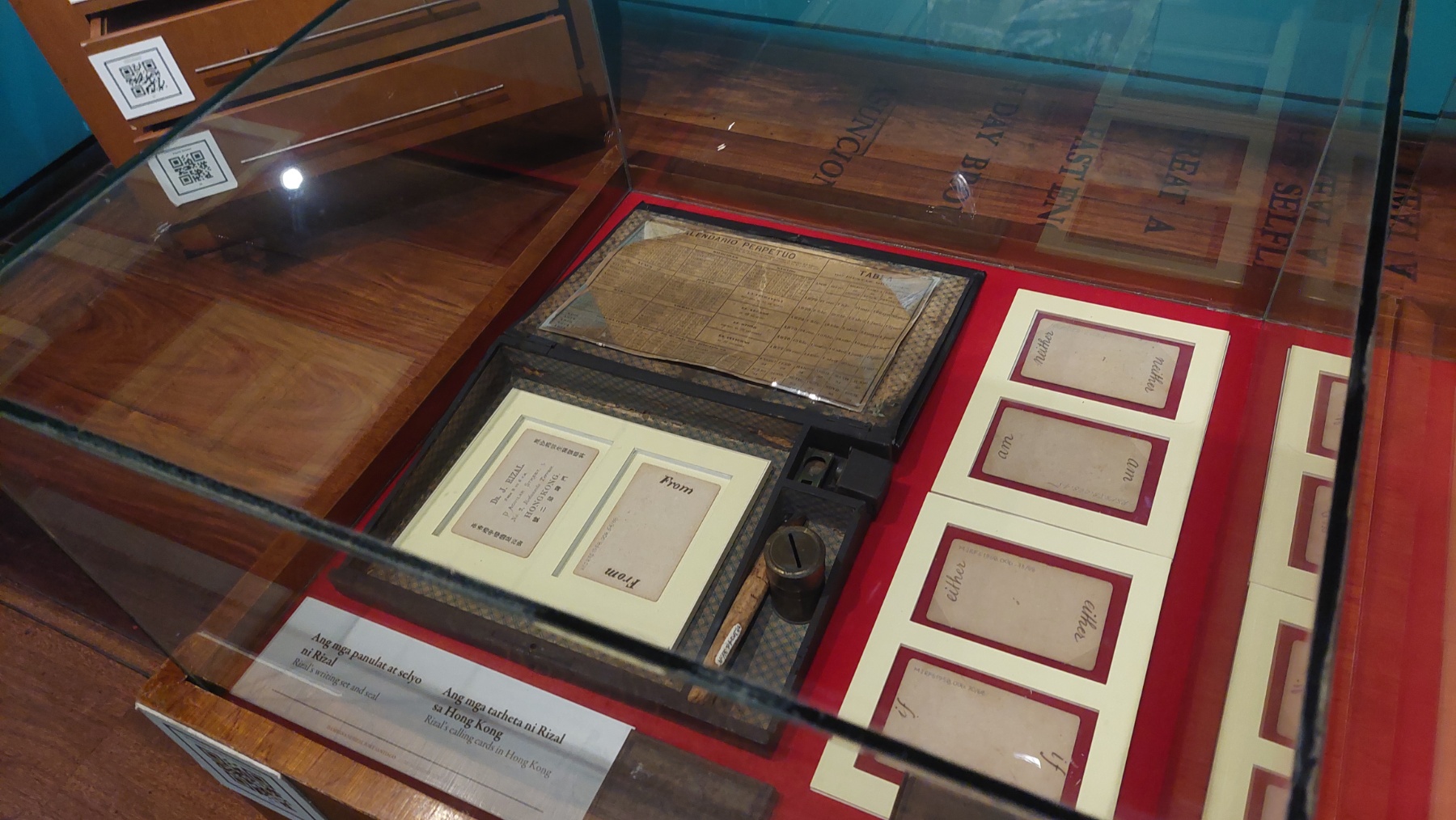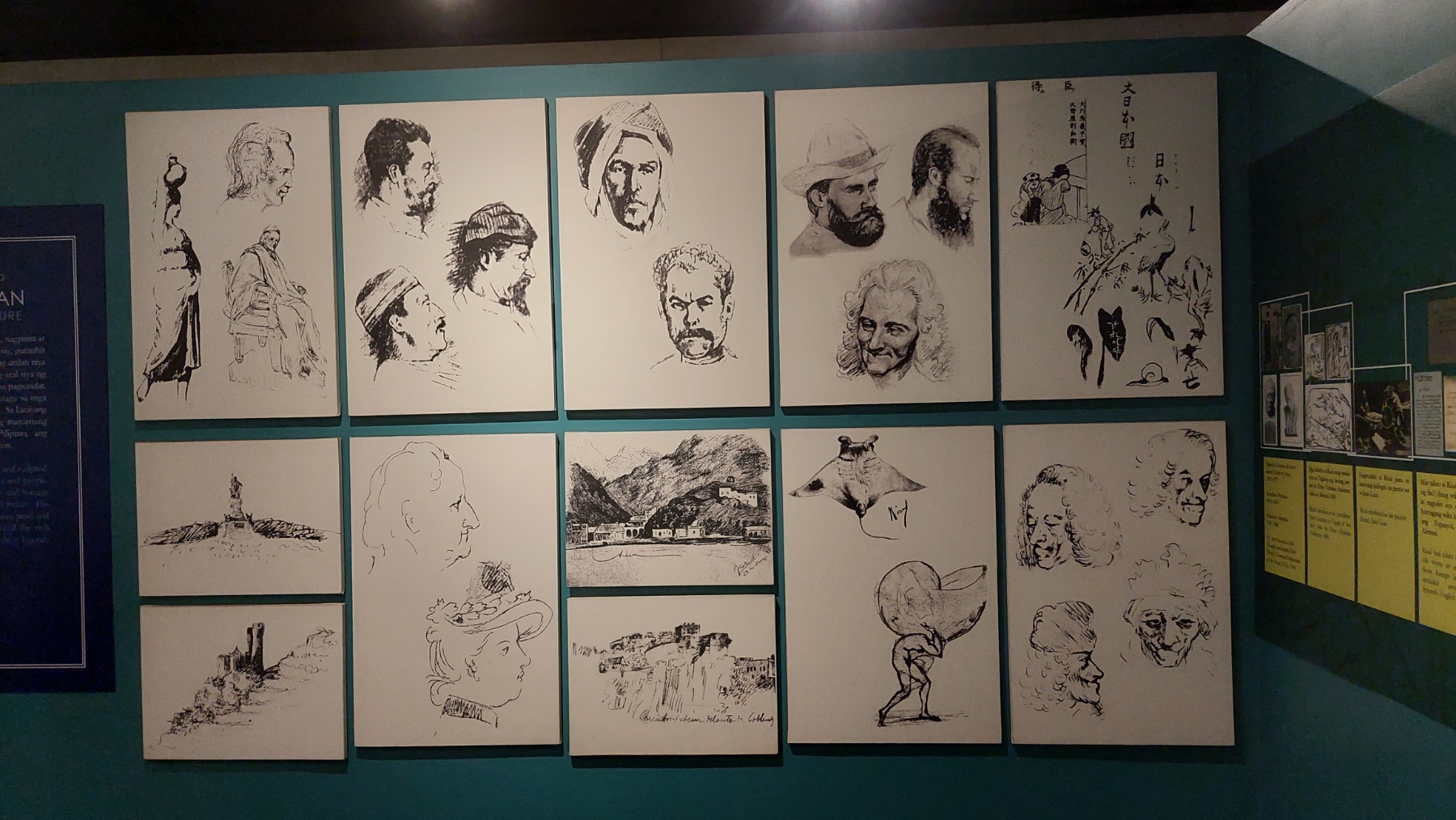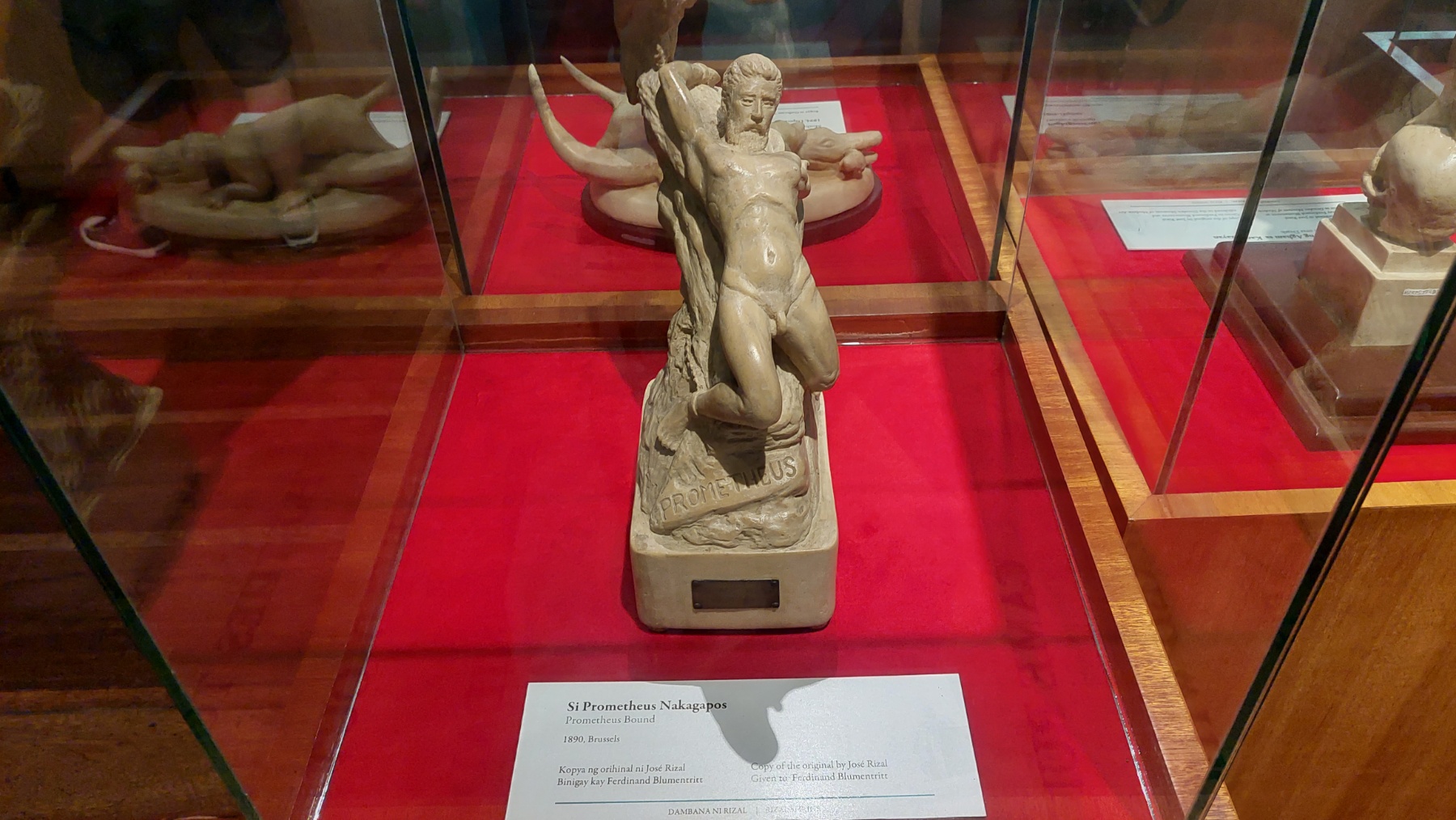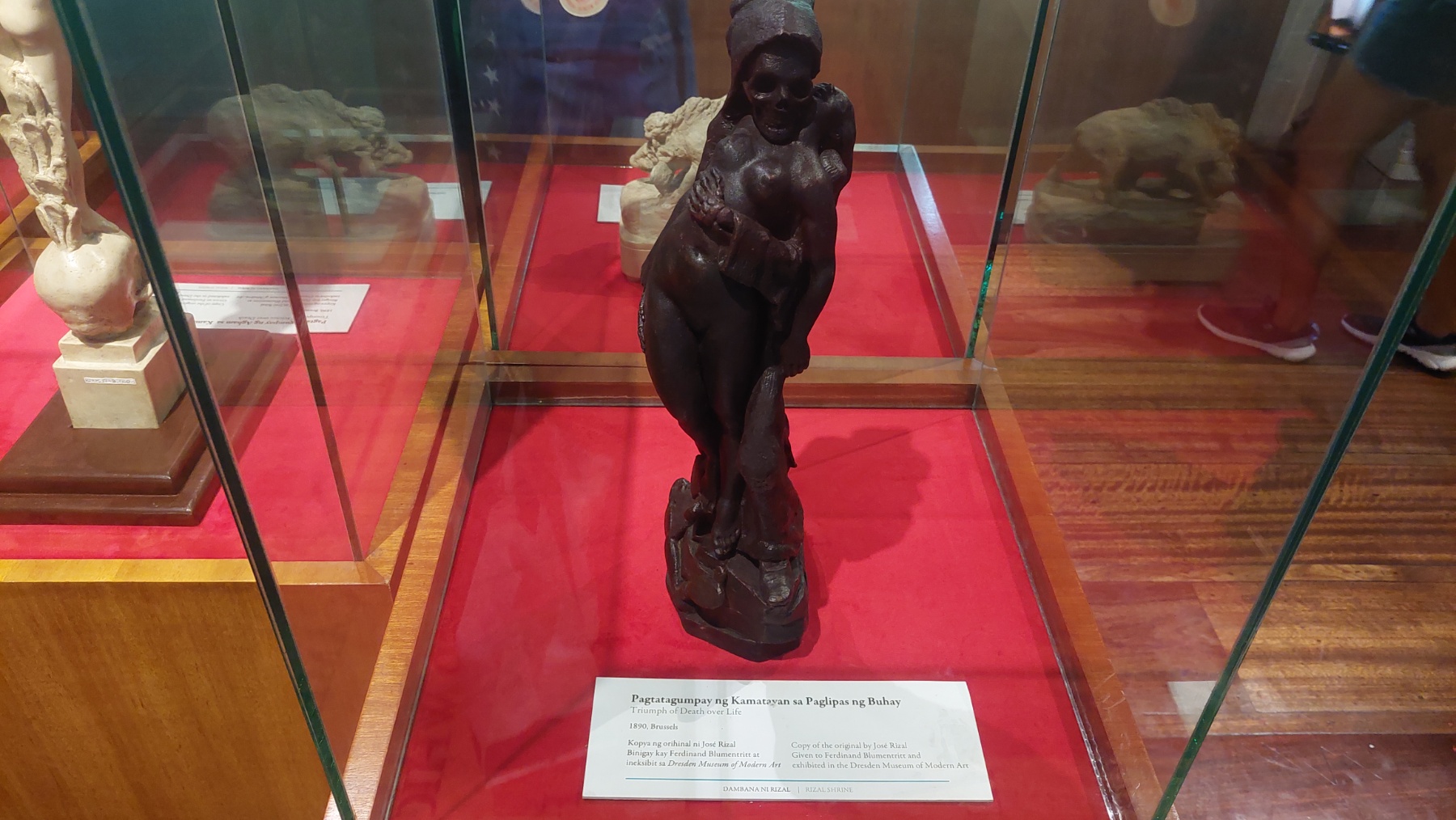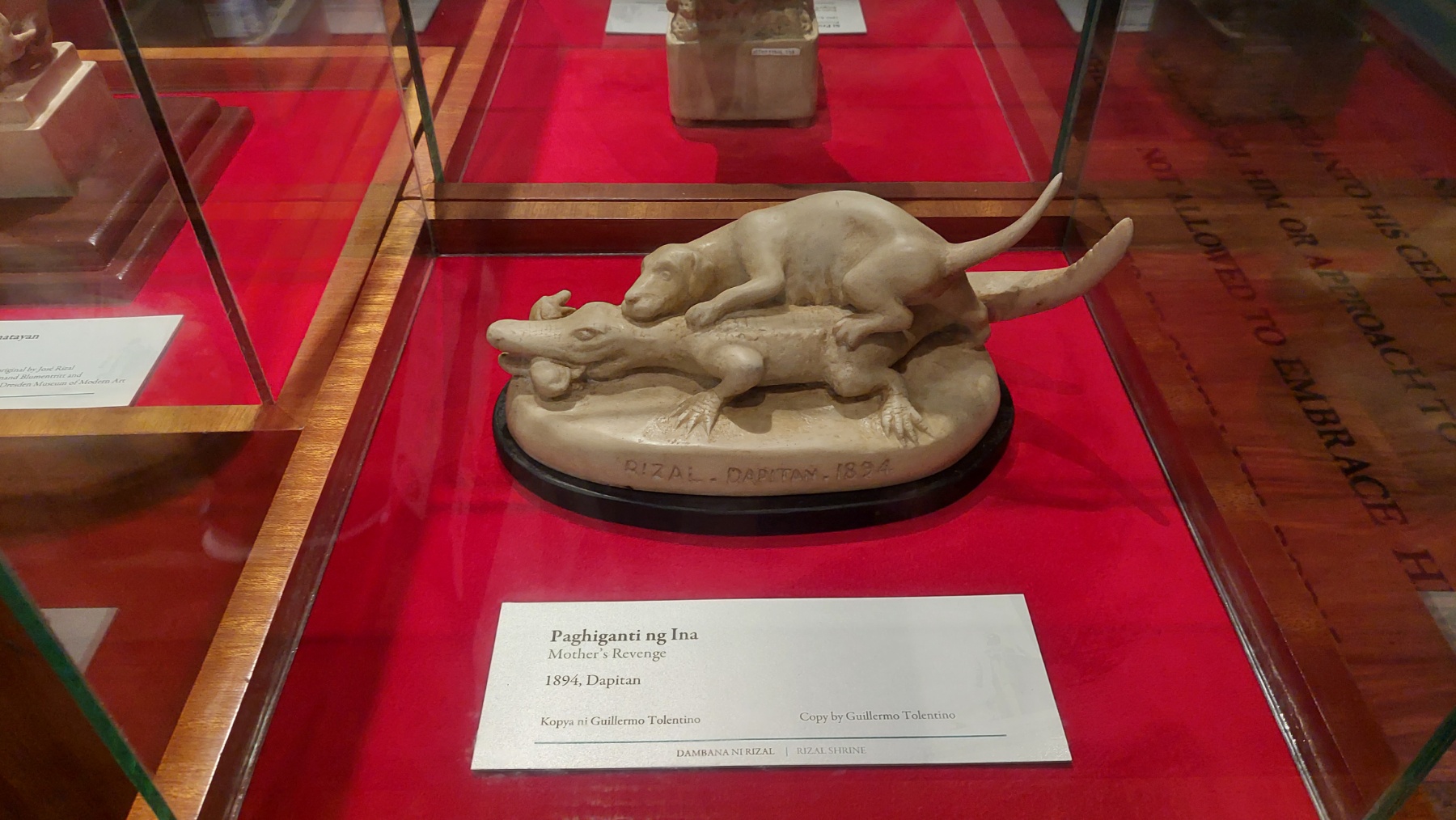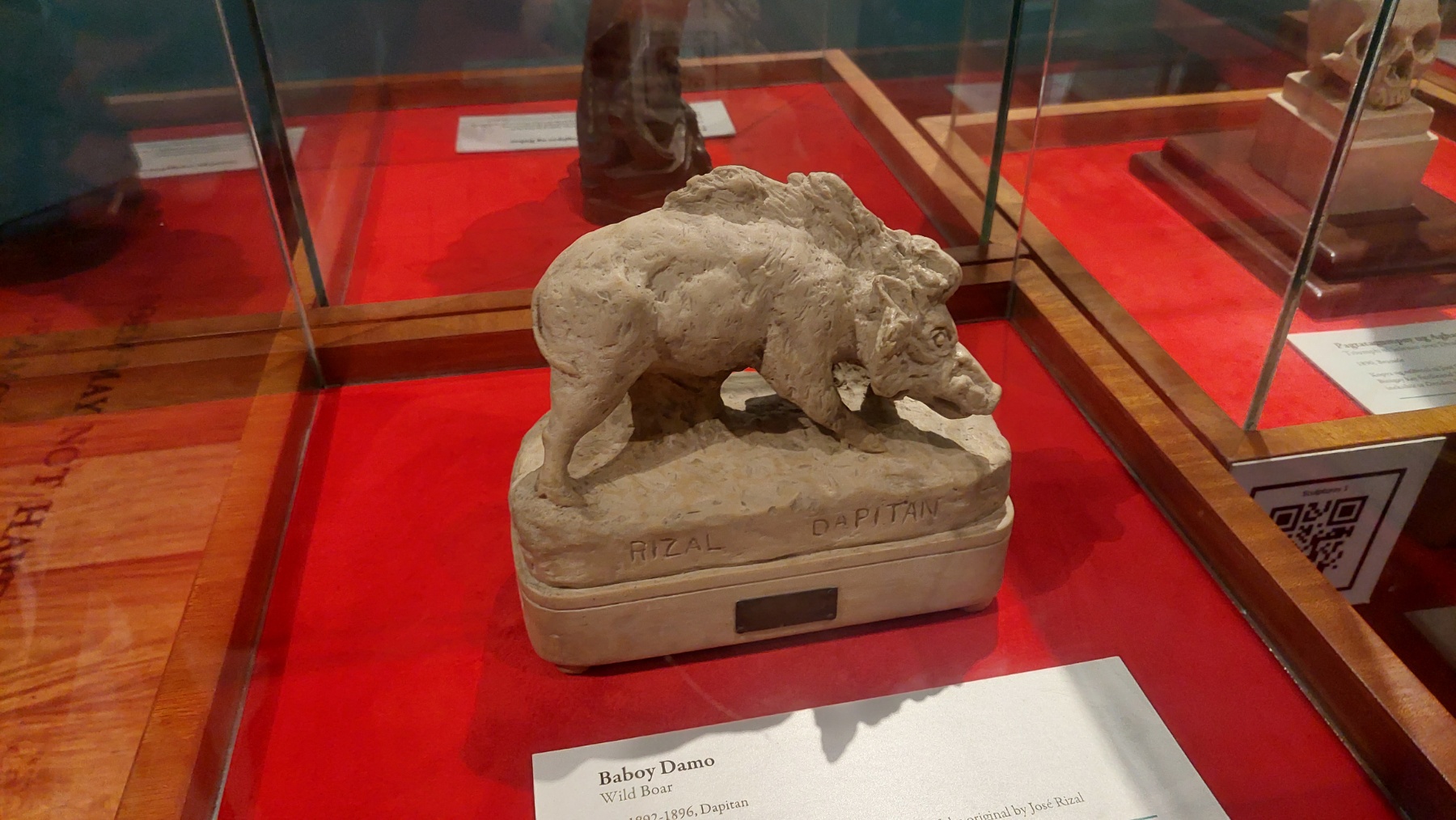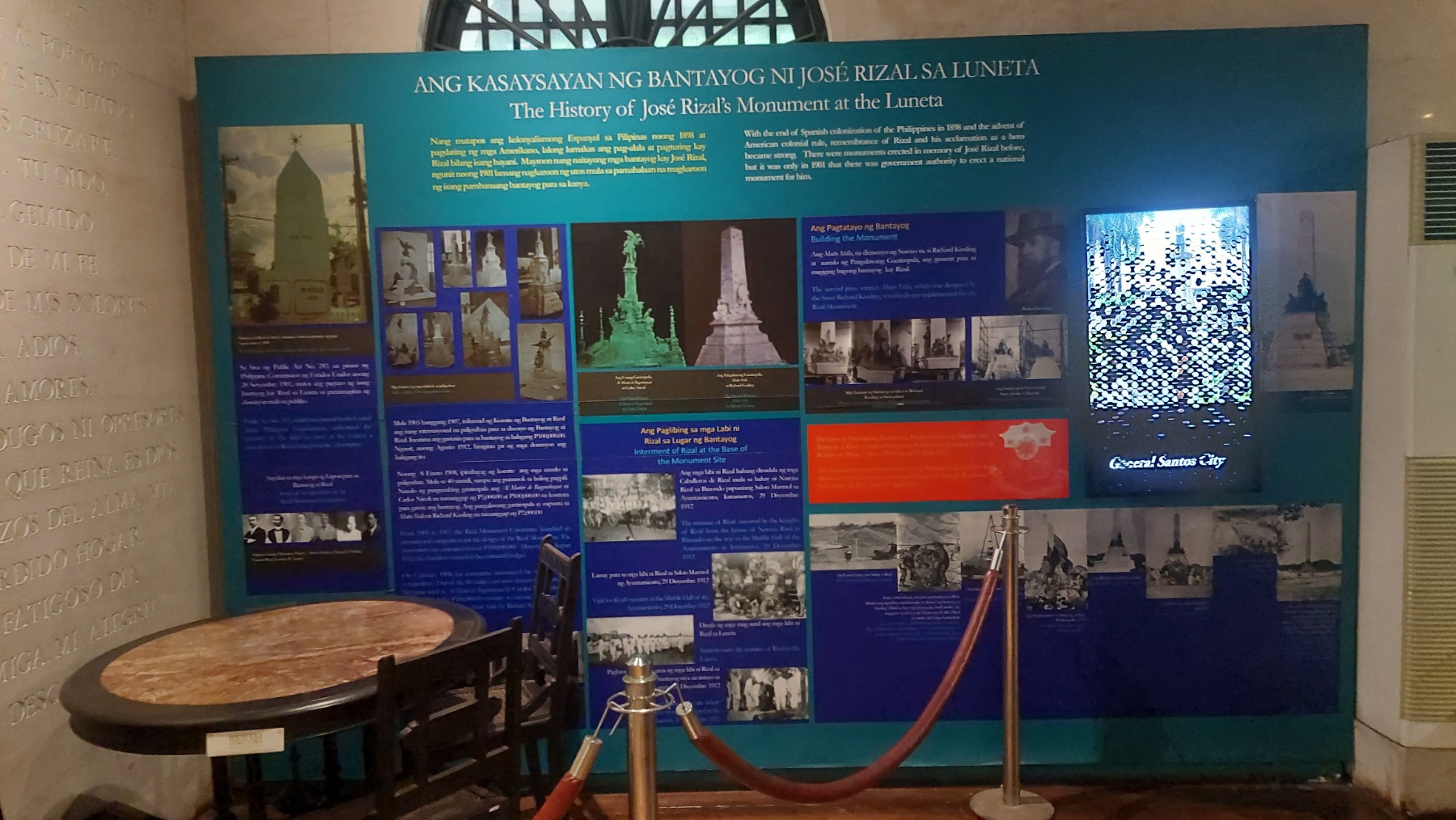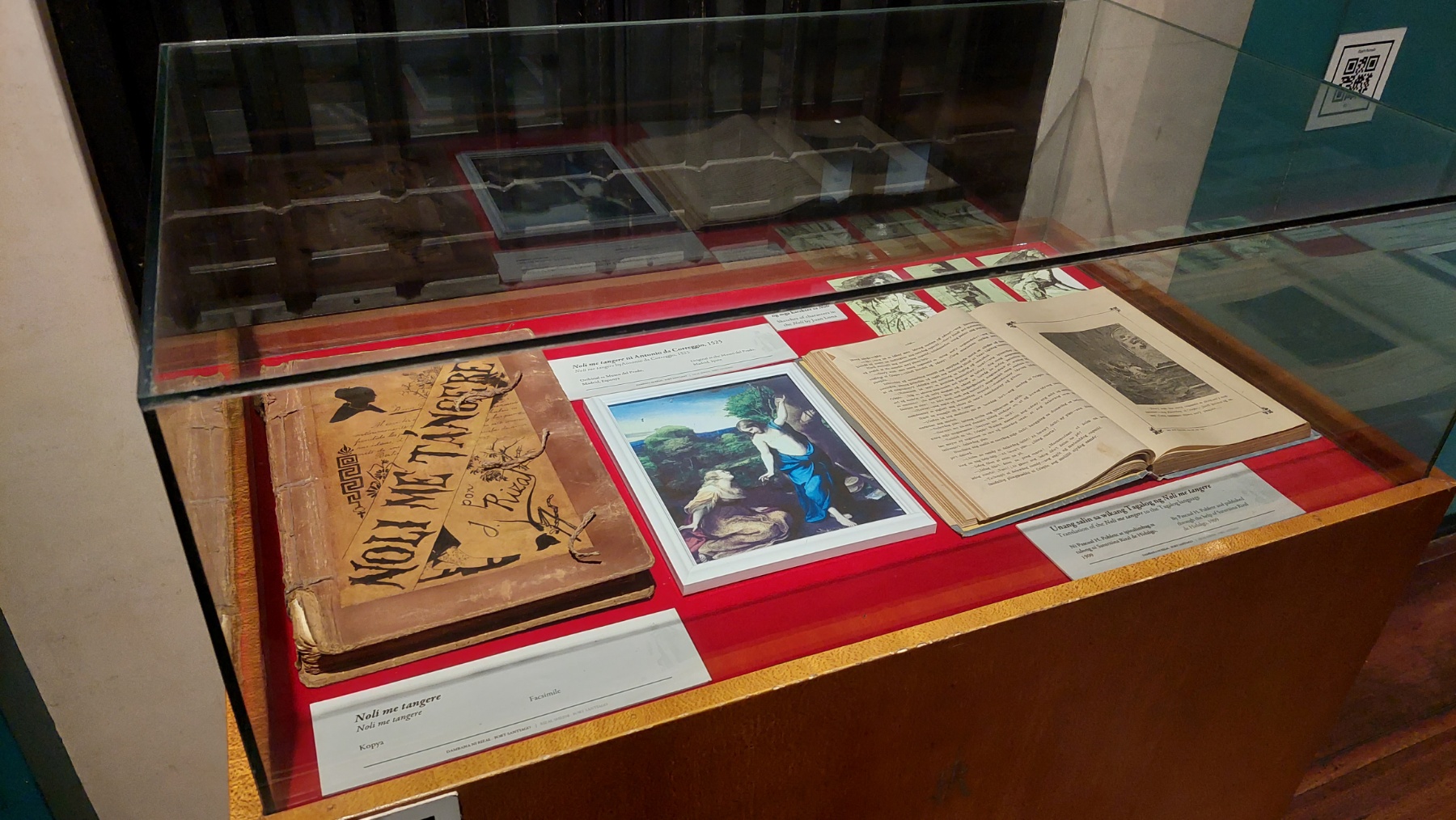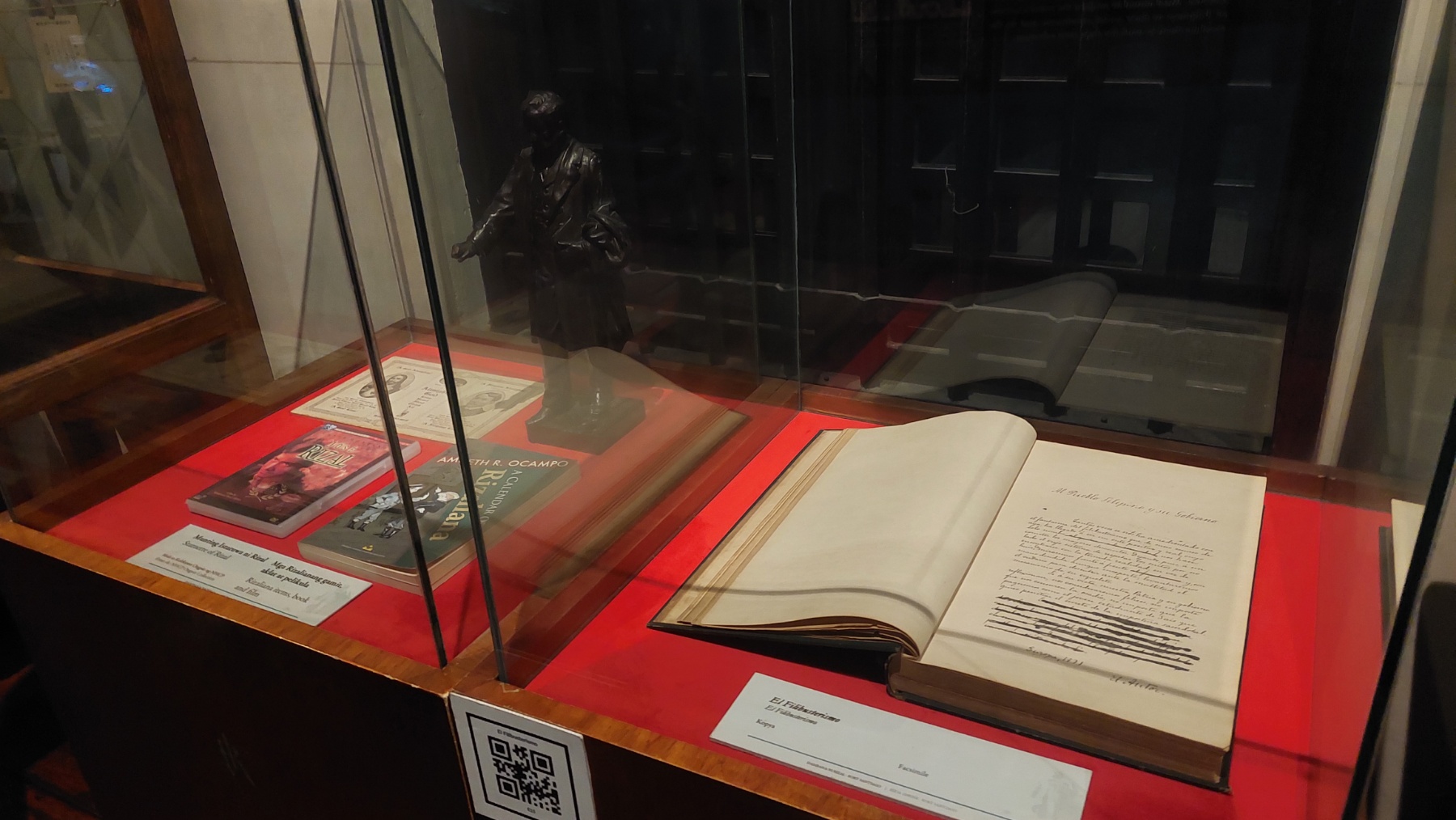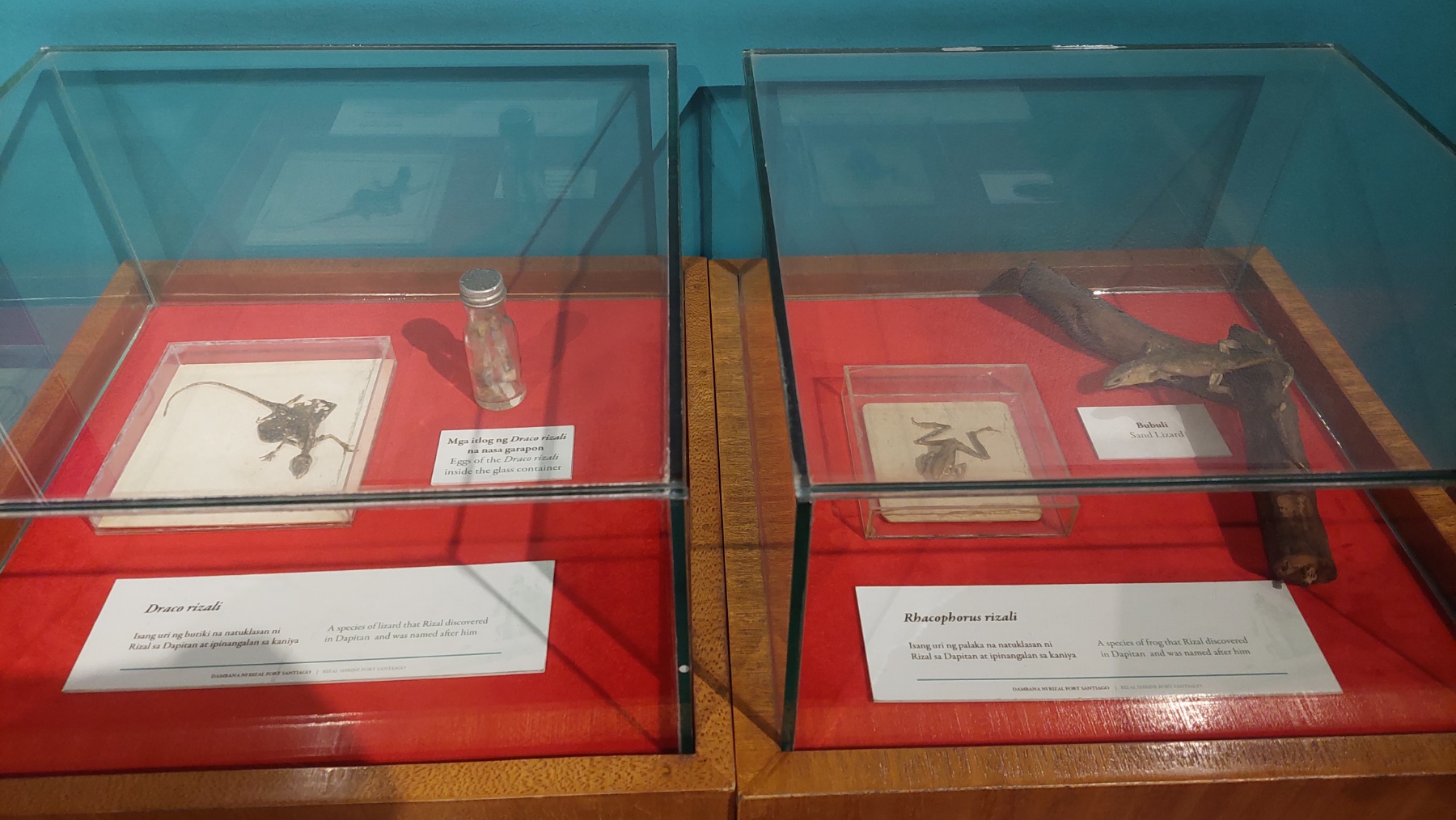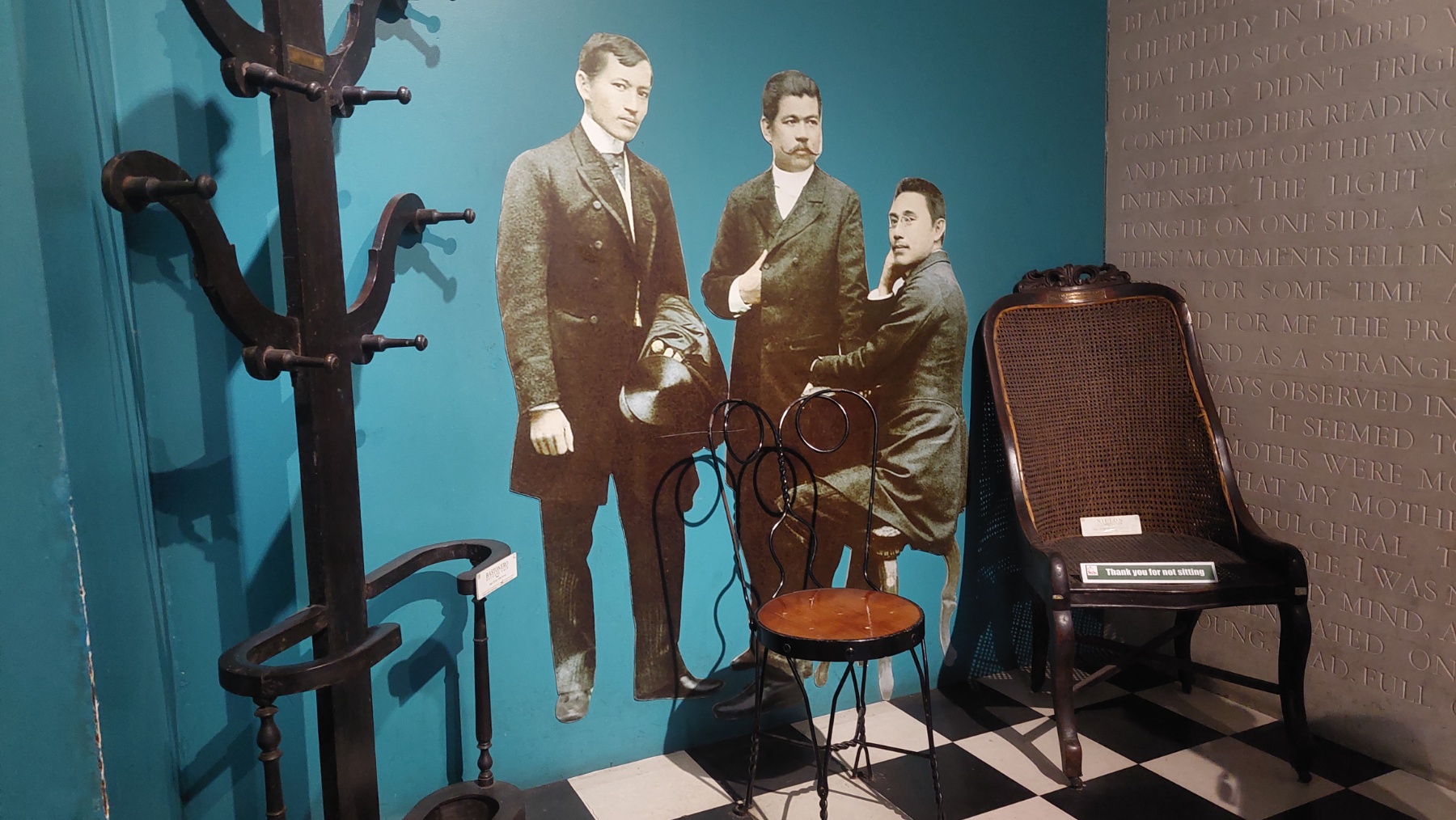Welcome to the Museo ni Rizal. Administered by the National Historical Commission of the Philippines (NHCP), this shrine reaffirms Rizal’s significance in Philippine history – how his death served as the inspiration in the struggle for Philippine independence.
This brick barracks, which was first built in the 16th century, has been in a ruined state since its destruction during the Battle of Manila in 1945. Here Jose Rizal was imprisoned for 56 days, from November 3 to December 29, 1896. The entire right wing of this building which contained his prison cell was reconstructed in 1953 as a museum and as a shrine dedicated to Jose Rizal. It was renovated in 1998 for the Philippine Independence Centennial, and subsequently modernized in 2014.
The Antesala of the Prison Cell
Originally used as a storage and pantry area of the soldiers’ barracks, this area was converted into a cell for Rizal for 56 days from November 3 to December 29, 1896. On 29 December 1896 at 6:00 a.m., Captain Rafael Dominguez, the Special Judge Advocate of the Council of War, read the death sentence to Rizal. Let me show you the letters that he wrote asking forgiveness from his family.
This painting represents Rizal’s last days when three of his sisters hugged him for the last time.
Prison Cell of Jose Rizal
Unlike other prisoners who were kept in the fort’s dungeons, Rizal was privileged to have his own cell. After repatriating Rizal to Manila from Barcelona aboard the S.S Colon, authorities immediately imprisoned him at Fort Santiago.
Silid Paglilitis (Trial Room)
This room depicts the trial that took place at Cuartel de España, a former Jesuit compound now occupied by the Pamansatan ng Lungsod ng Maynila, where a military court convicted Rizal of forming an illicit organization and inciting to rebellion.
Silid Kabayanihan
Here is a letter dated 29 December 1896 written by Teodora Alonso to Governor General Camilio de Polavieja pleading pardon for her son.
Here is Jose Rizal’s last gift to Josephine Bracken given on the morning of 30 December 1896. (Point to photo) The firing squad at Bagumbayan consisted of eight Filipino soldiers with rifles, while eight Spanish soldiers at the rear stood ready with rifles in case the Filipino soldiers do not follow orders to execute Rizal. After the rolling of drums, the commanding officer gave the shout to fire. When Rizal fell to the ground, an officer approached his body to give the final shot. Everything was over by 7:03 a.m.
Alcohol Stove/ Mi Ultimo Adios
This alcohol stove given by the Pardo de Tavera family to Rizal was where Rizal carefully hid the untitled poem which he finished writing in his cell. This poem would be eventually known as Mi Ultimo Adios or My Last Farewell. He gave the stove to his sister, Narcisa on the eve of his execution. Here is a doctor’s certificate and other documents attesting to Rizal’s death and that his remains were entrusted to the Brothers of Peace and Charity. This group collected the body and took charge of its interment.
Rizal’s tomb at the Paco Cemetery
After Rizal’s execution, authorities buried him secretly in an unmarked grave at Paco General Cemetery. After two days, Narcisa Rizal located the grave and placed a marker with the letters “R.P.J.,” Rizal’s initials in reverse. His name was never mentioned after his death. Instead, he was referred to as el difunto, meaning “the deceased.” It was only after 1898 with Spain’s defeat in the Spanish-American War that Narcisa was able to exhume Rizal’s remains which were brought to the house of his relative Higino Francisco in Binondo. His bones were washed with the waters of the estero de Binondo. The remains were then placed in an urn kept by Rizal’s family.
Rizal’s vertebra
Here is a piece of Rizal’s vertebra where the bullet hit Rizal. This is the most important display here at the Museo ni Rizal because this object is a part of Rizal himself.
Rizal’s mural
This mural entitled “The martyrdom of Jose Rizal” by National Artist for Painting, Carlos “Botong” Francisco depicts important events in his life.
Rizal’s coat, hat, and case
Here are some of Rizal’s clothes and accessories which he used in his travels in Europe.
Stairs leading to the audiovisual room
This gallery presents key people who figured in the world of Rizal and who, after his death, moved on with their lives and pursued the cause of freedom.
Antonio Luna
Gen. Antonio Luna was the Director of War and Supreme Chief of the Army. He established a military school, the Academia Militar, in Malolos in 1899. Soldiers of the Kawit Battalion murdered him in Cabanatuan, Nueva Ecija.
Juan Luna
Spanish authorities arrested and jailed Juan Luna and his brother Antonio because of their supposed involvement with the Katipunan. President Emilio Aguinaldo appointed him as a member of the delegation that worked for the recognition of the new Philippine Republic in Paris and the United States.
The Katipunan
Rizal’s execution further ignited the revolution against Spain. Andres Bonifacio led the revolution. However, he and his brother Procopio were charged with treason and sedition by his rival, General Emilio Aguinaldo, and were subsequently executed.
Paciano Rizal
Rizal’s brother Paciano joined the Katipunan and became a general in the Philippine revolutionary army. After his capture by the Americans in 1901, he lived a quiet life in Los Baños, Laguna. He died in 1930.
Josephine Bracken
Josephine Bracken joined the revolutionaries in Cavite where she worked as a field nurse. Through the help of Paciano Rizal, she returned to Hong Kong where she met Vicente Abad whom she married. She died of tuberculosis.
The Thirteen Martrys of Bagumbayan
The Thirteen Martyrs of Bagumbayan were executed because they were members of La Liga Filipina, a group that Rizal organized.
Basilio Agustin, Arsobispo Bernardino Nozaleda, and Camilo de Polavieja
Spain blamed Governors-General Camilo de Polavieja, Fermin Jaudenes and Basilio Agustin, and the Archbishop of Manila, Bernardino Nozaleda for the death of Jose Rizal and the events that led to Spain’s eventual loss of the Philippines, which was called el desastre filipino or the Philippine disaster.
The audiovisual room
These paintings are the winners of the Rizal Centennial Painting Competition in 1961.
Room of Legacy (Silid Pamana)
Here is Rizal’s fencing vest, fencing foils, and a photo taken in Paris of Jose Rizal and Juan Luna.
Teodora Alonso, Rizal’s mother, was his first teacher. His parents hired private tutors to teach him Spanish and Latin, among other courses. In June 1870, Rizal studied in the school of Maestro Justiniano Aquino Cruz in Biñan. He excelled though he was the youngest in the class. Rizal studied at the Ateneo Municipal de Manila in Intramuros from 1872 until 1877.
At the University of Santo Tomas, Rizal studied Philosophy and Letters and then took a course in Medicine. Rizal’s talent in poetry was recognized by the Liceo Artistico Literario de Manila with an award for his ode A la juventud Filipina (To the Filipino youth) in 1879. Rizal continued his studies in medicine at Universidad Central de Madrid in Spain in 1882.
Here are the calling cards and surgical instruments that he used as an opthalmologist in Hong Kong.
Rizal was also a painter and sculptor. Here is a self-portrait, a sketch of his friend Ferdinand Blumentritt, an oil painting of his sister Saturnina, and a sketch of his former love, Leonor Rivera. Among his sculptures are “Prometheus Bound” made in 1890 at Brussels, Belgium, and “Triumph of Death over Life.”
The History of Jose Rizal’s Monument at the Luneta
With the end of Spanish rule, Rizal’s heroism was celebrated. Republic Act No. 243 was passed by the United States Philippine Commission, authorizing a monument to Rizal at the Luneta. The Rizal Monument Committee launched an international competition for the design of the Rizal Monument. The second placer called Motto Stella designed by Richard Kissling of Switzerland, was chosen for the Rizal monument. Here is a photo of the remains of Rizal escorted by the Knights of Rizal from the house of his sister Narcisa Rizal in Binondo on the way to the Marble Hall of the Ayuntamiento in Intramuros on 29 December 1912. This was followed by a vigil at the Ayuntamiento and the interment at the site where his monument would be erected the day after, which was Rizal’s death anniversary.
Rizal and Social Equality
As he sought equal rights for the Filipinos, Rizal wrote articles for La Solidaridad, a propaganda newspaper. Here are reproductions of his writings. The original copies are kept at the National Library. His works inspired future reformists and revolutionists especially the Katipunan. His first novel published in 1887 in Berlin, Germany is Noli me Tangere, meaning “Touch me Not” in Latin. Rizal wrote his second novel El Filibusterismo or “The Reign of Greed” which was published in 1891 in Ghent, Belgium.
Rizal on Science and the Environment
Rizal discovered new species of frog and lizard which were eventually named after him. This frog is Rhacophorus rizali and this lizard is Draco rizali.
Rizal and Economic Growth
When Rizal won the lottery, he purchased a piece of land in Dapitan, Zamboanga del Norte which he planted to various crops like cacao, sugarcane, coconuts, abaca, and fruit trees. He introduced new machinery and methods and became a successful businessman. Rizal also helped Dapitan by designing a waterworks system and a dam.
Exit
Location
We are inside Fort Santiago (Item no. 18 in map below):
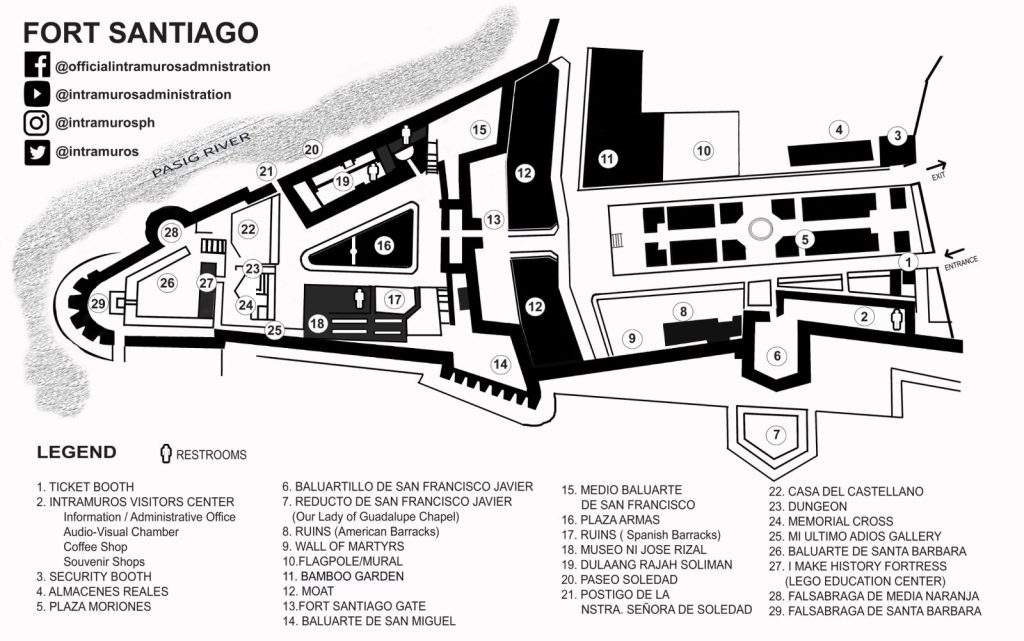
For comments or questions contact us via [email protected]
#WeAreIntramuros

